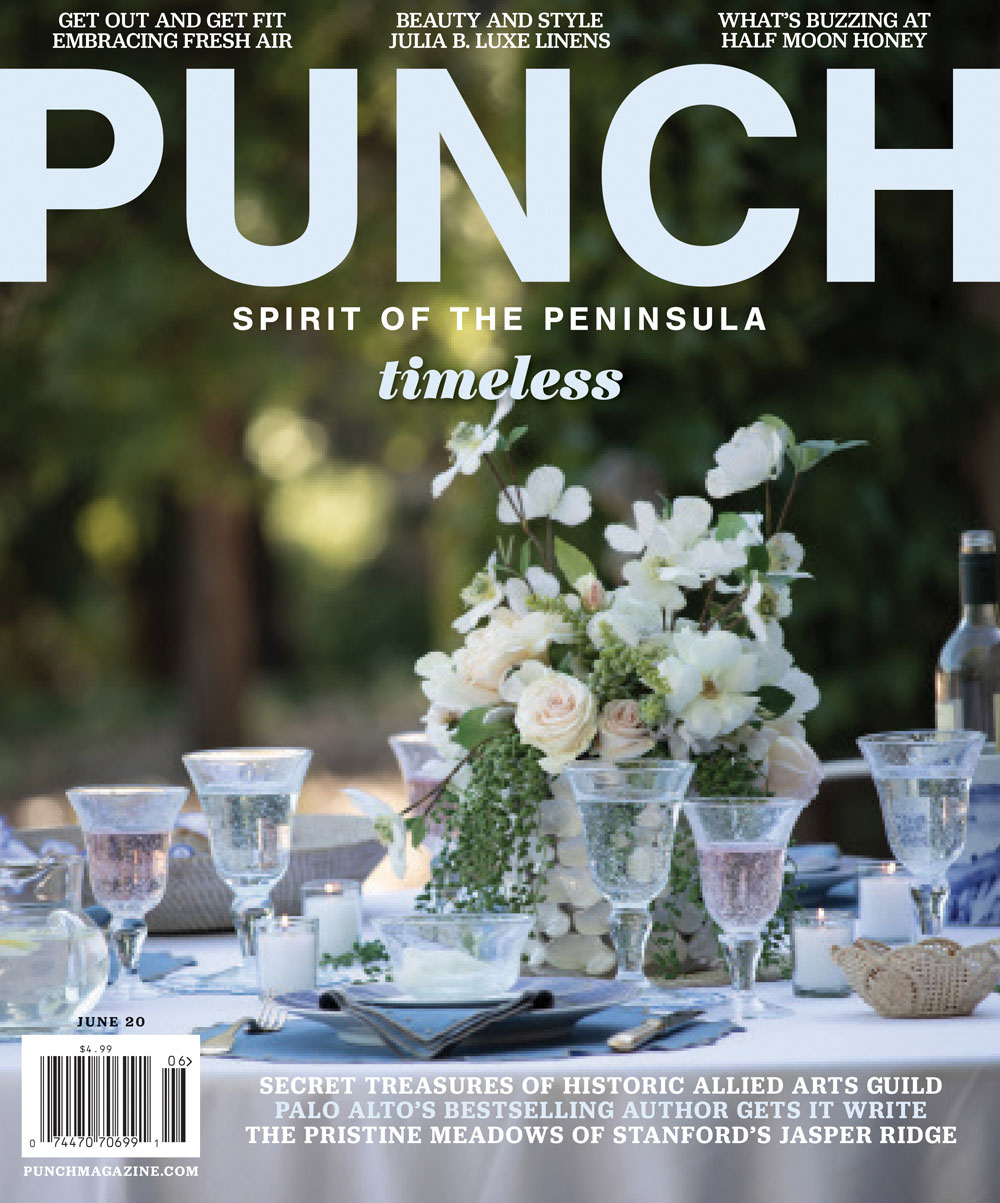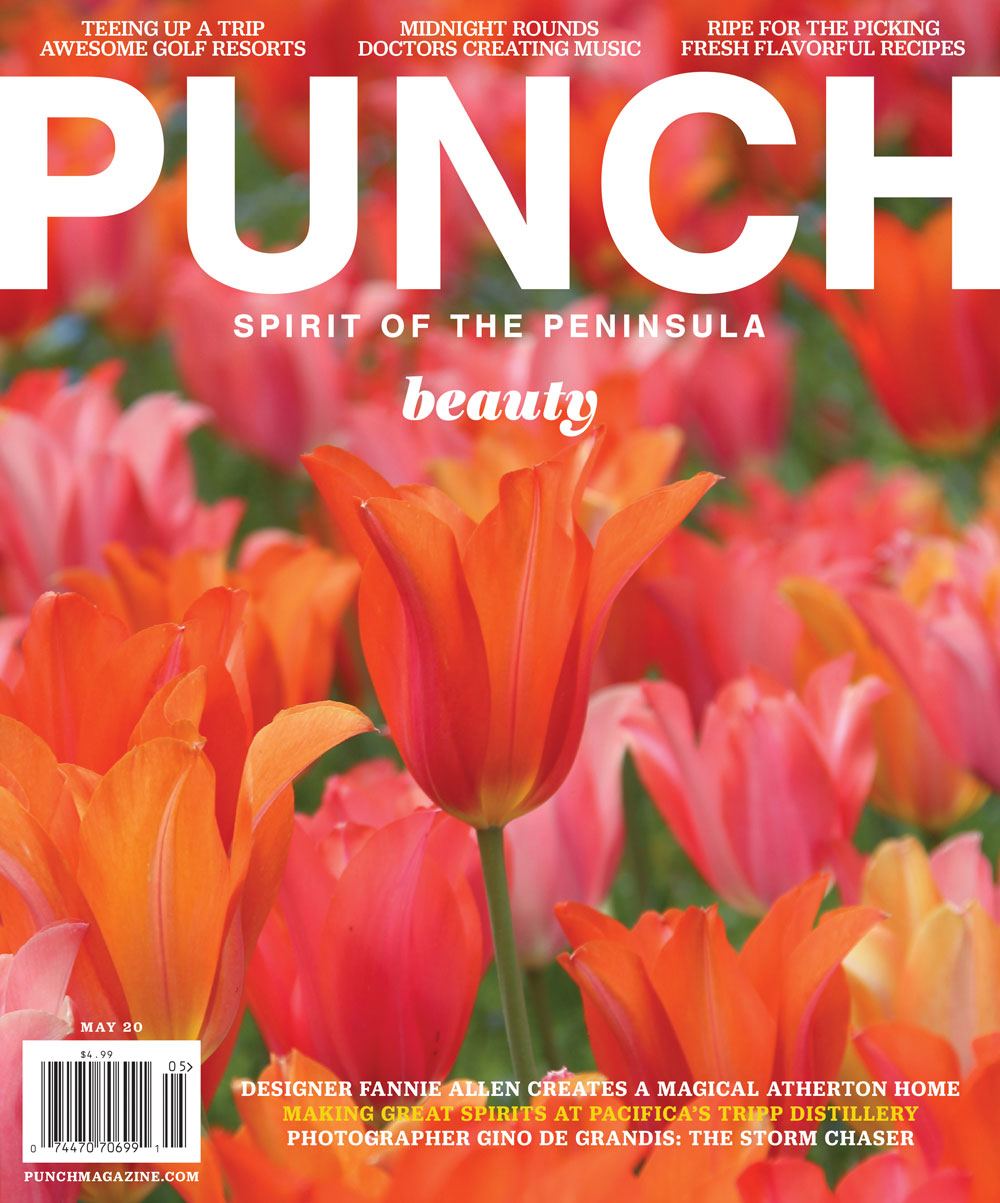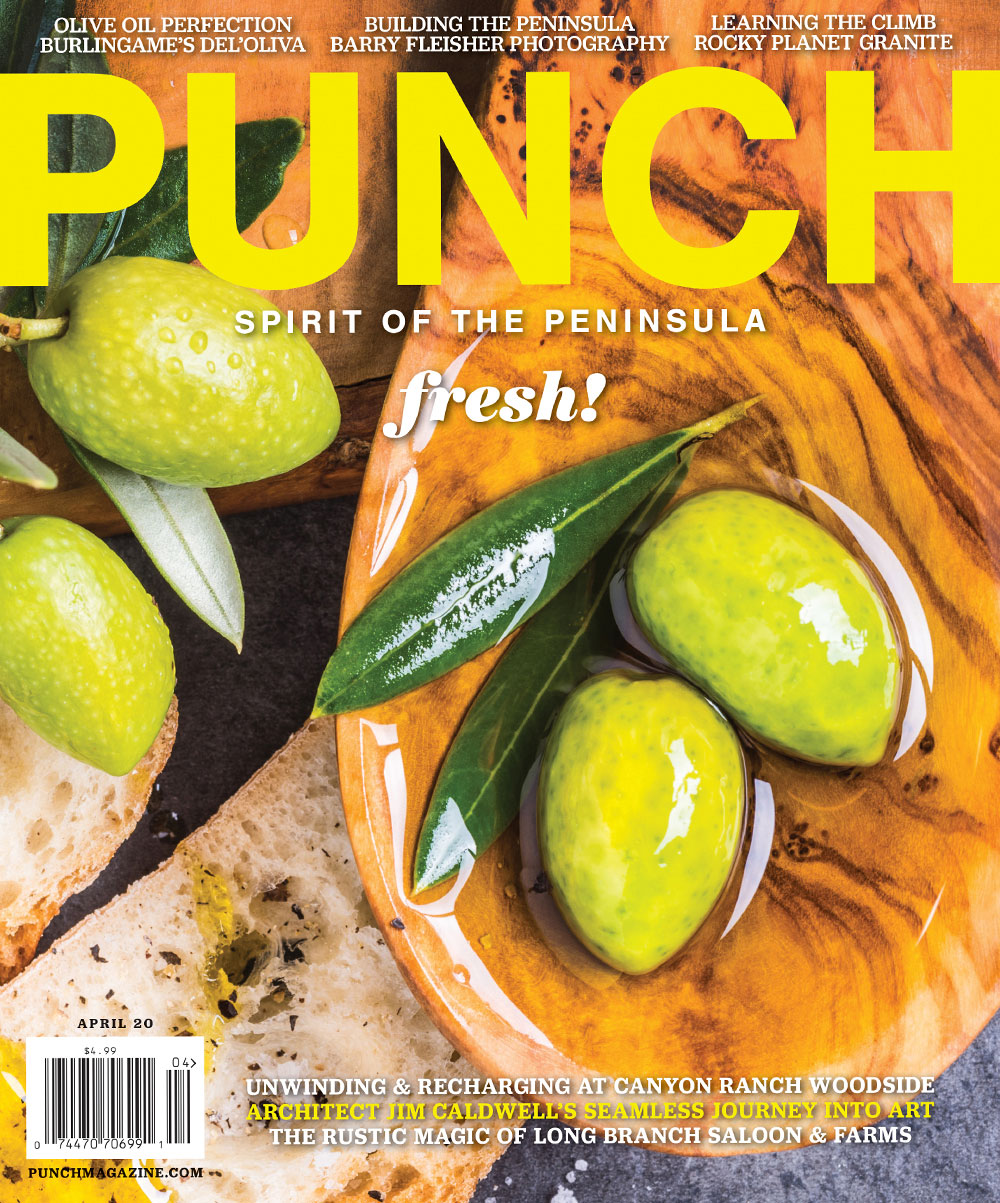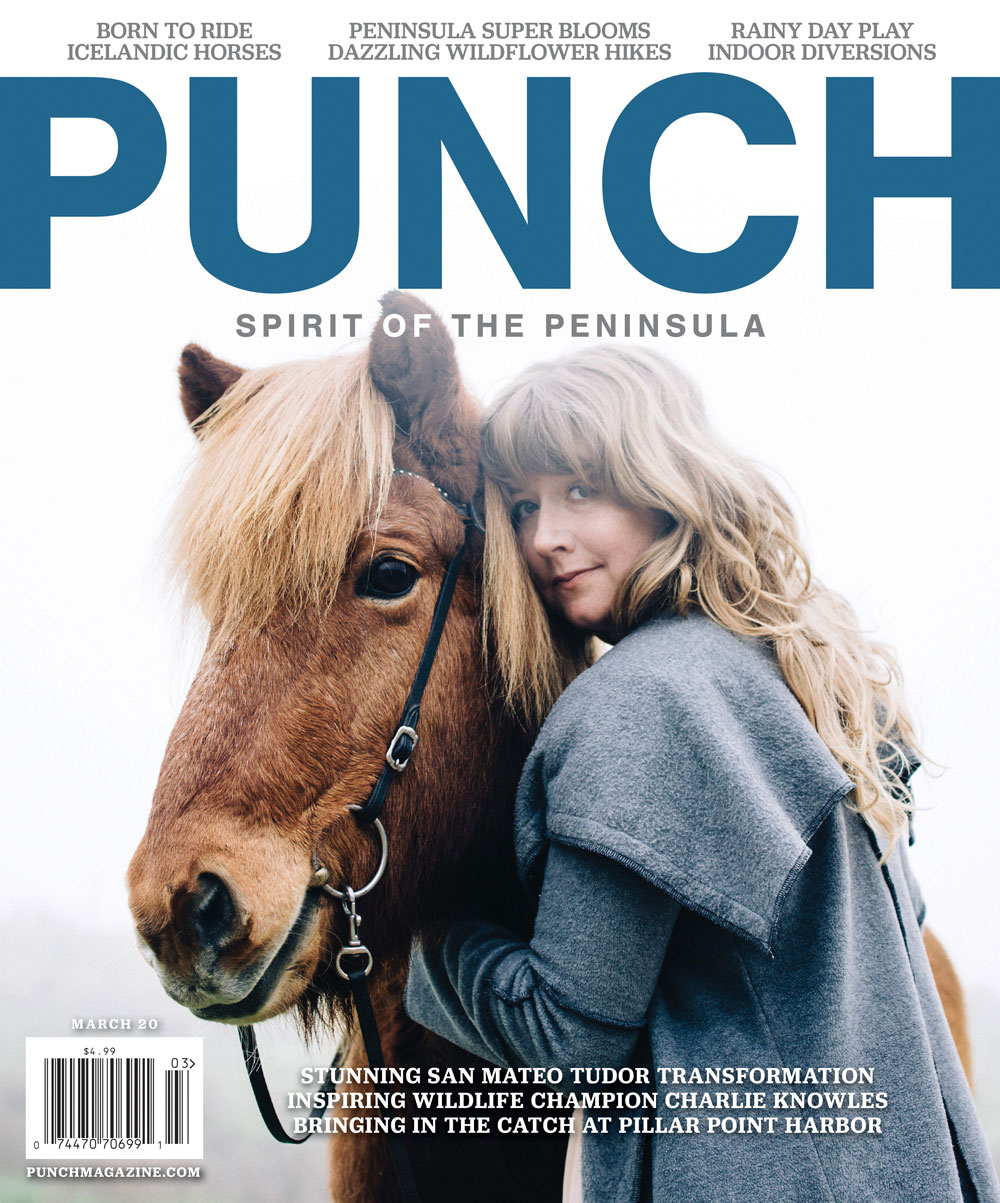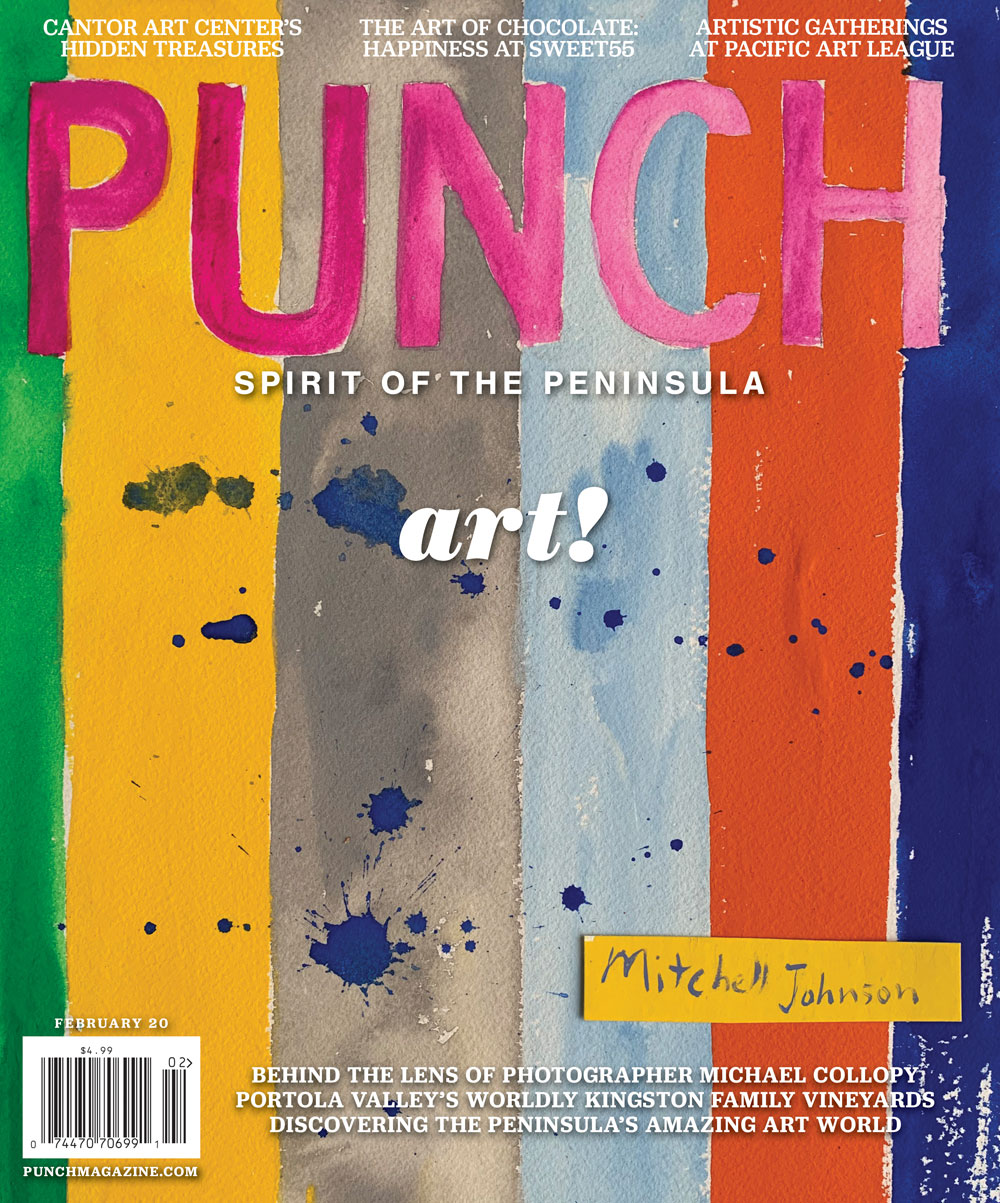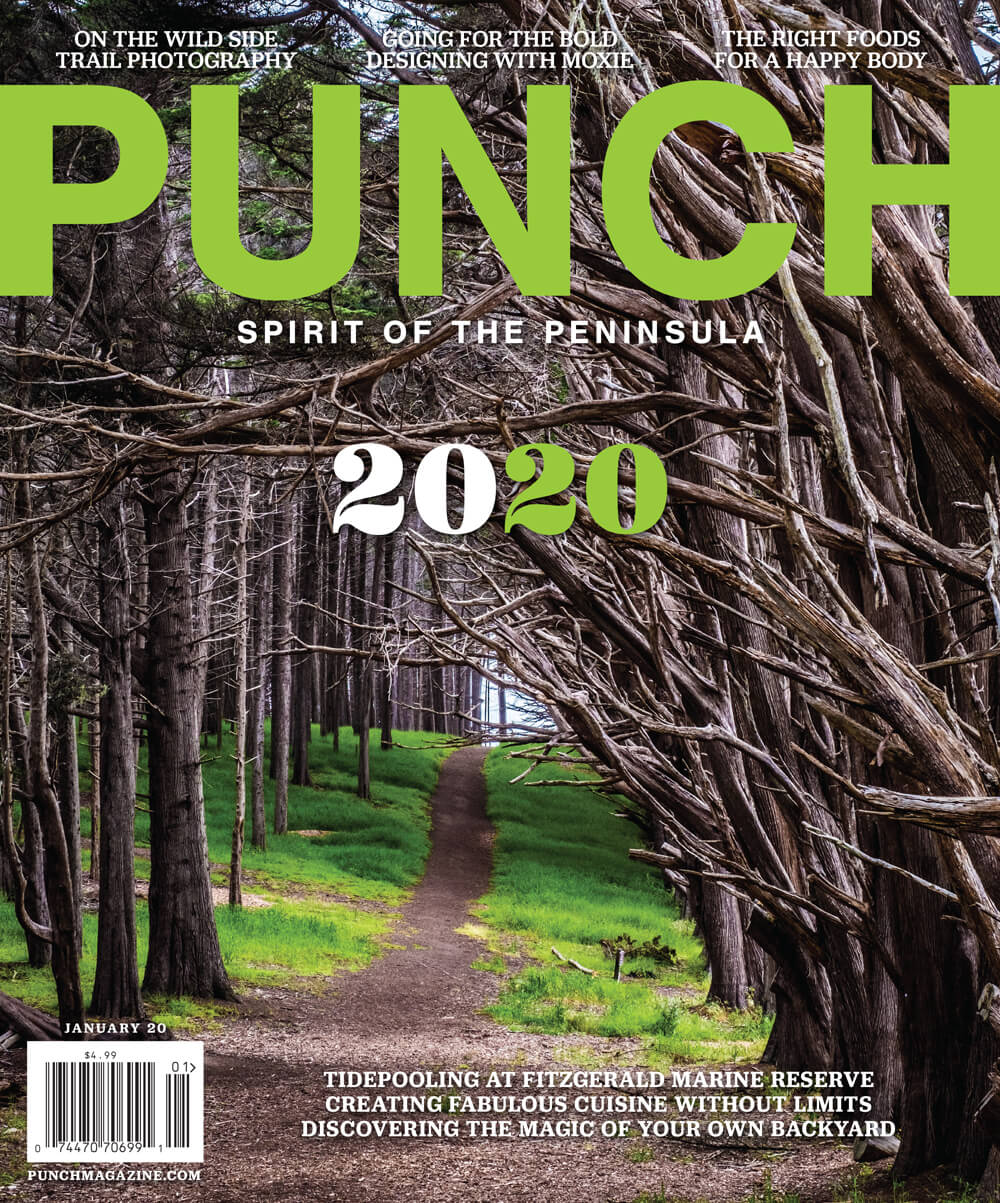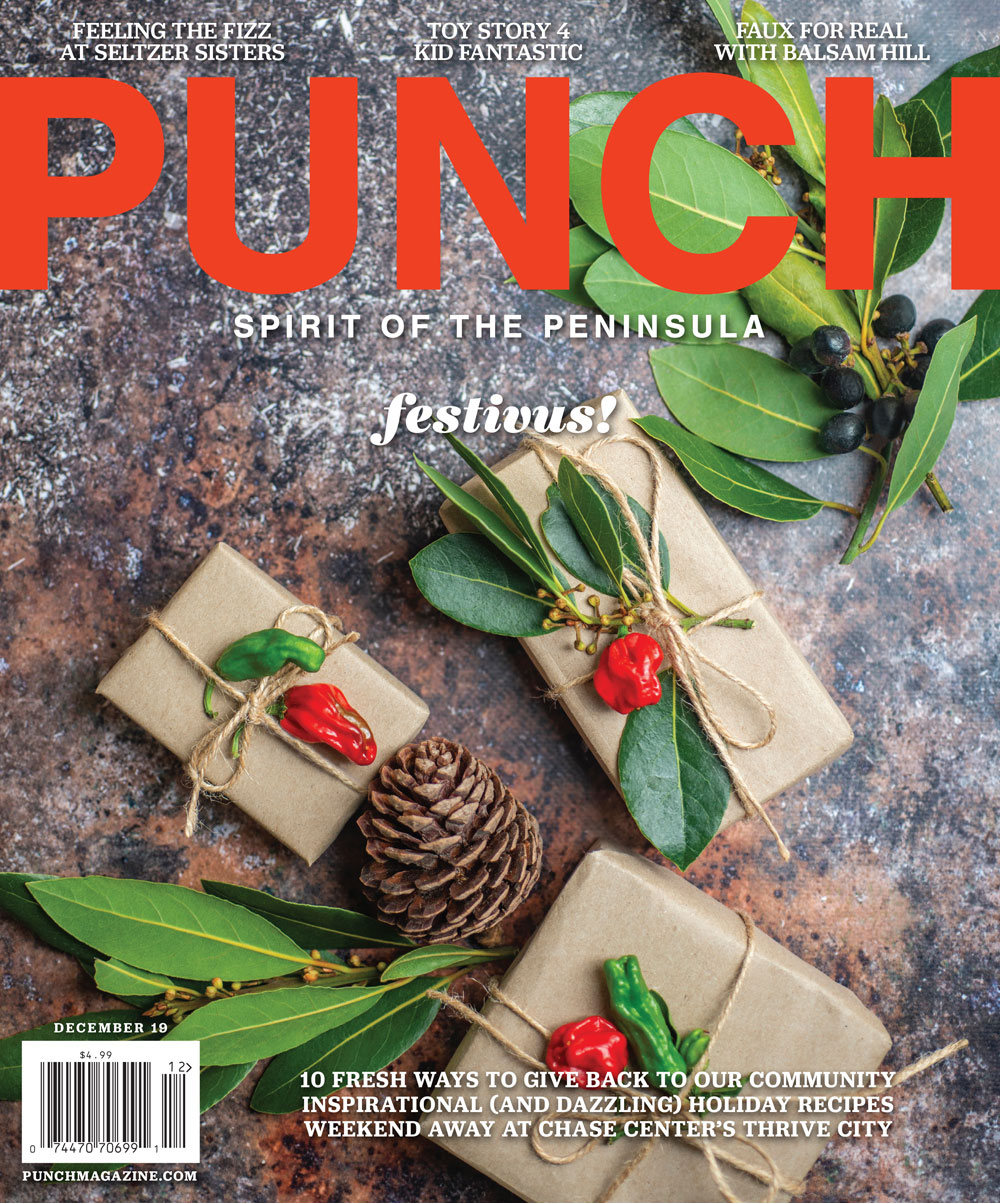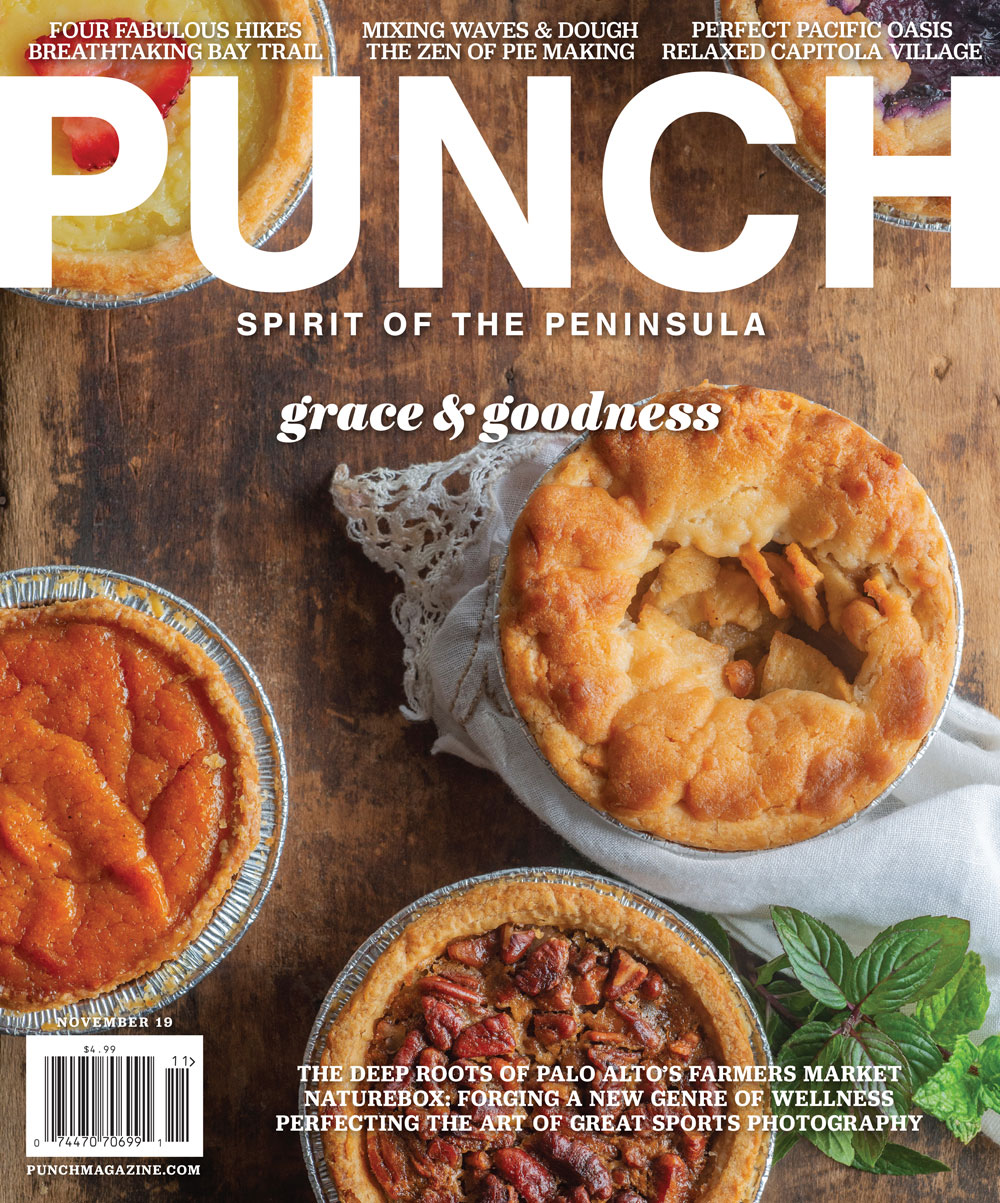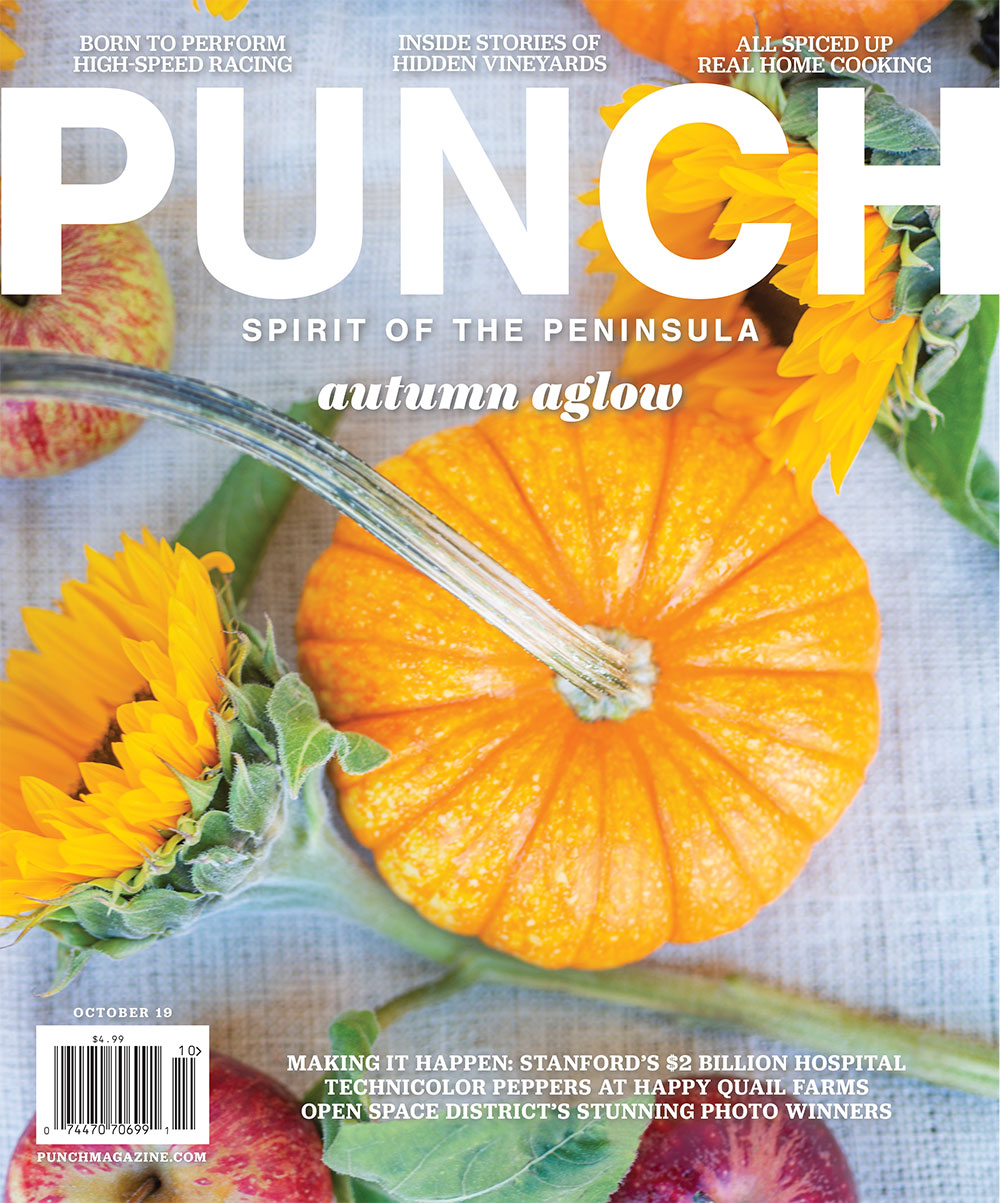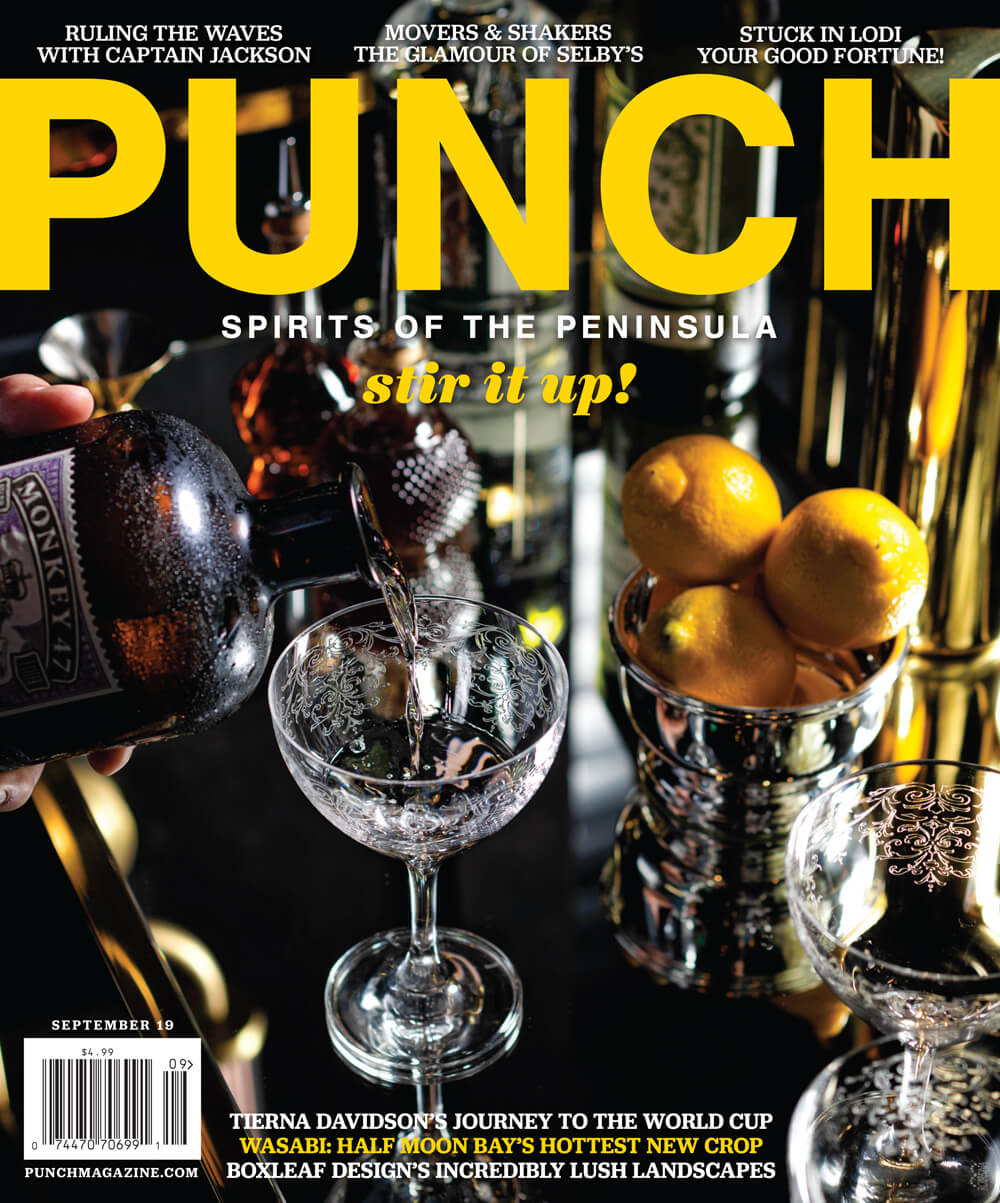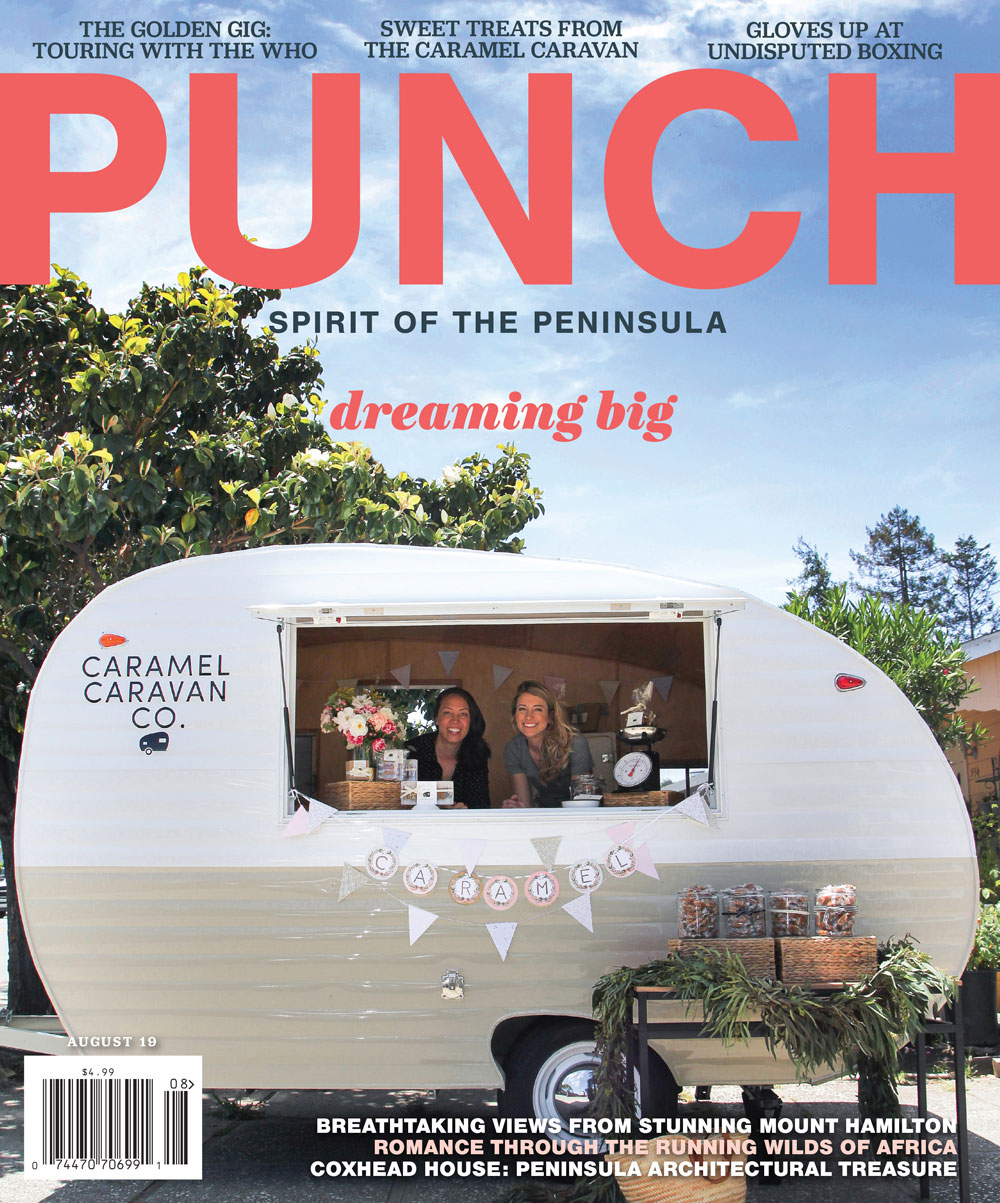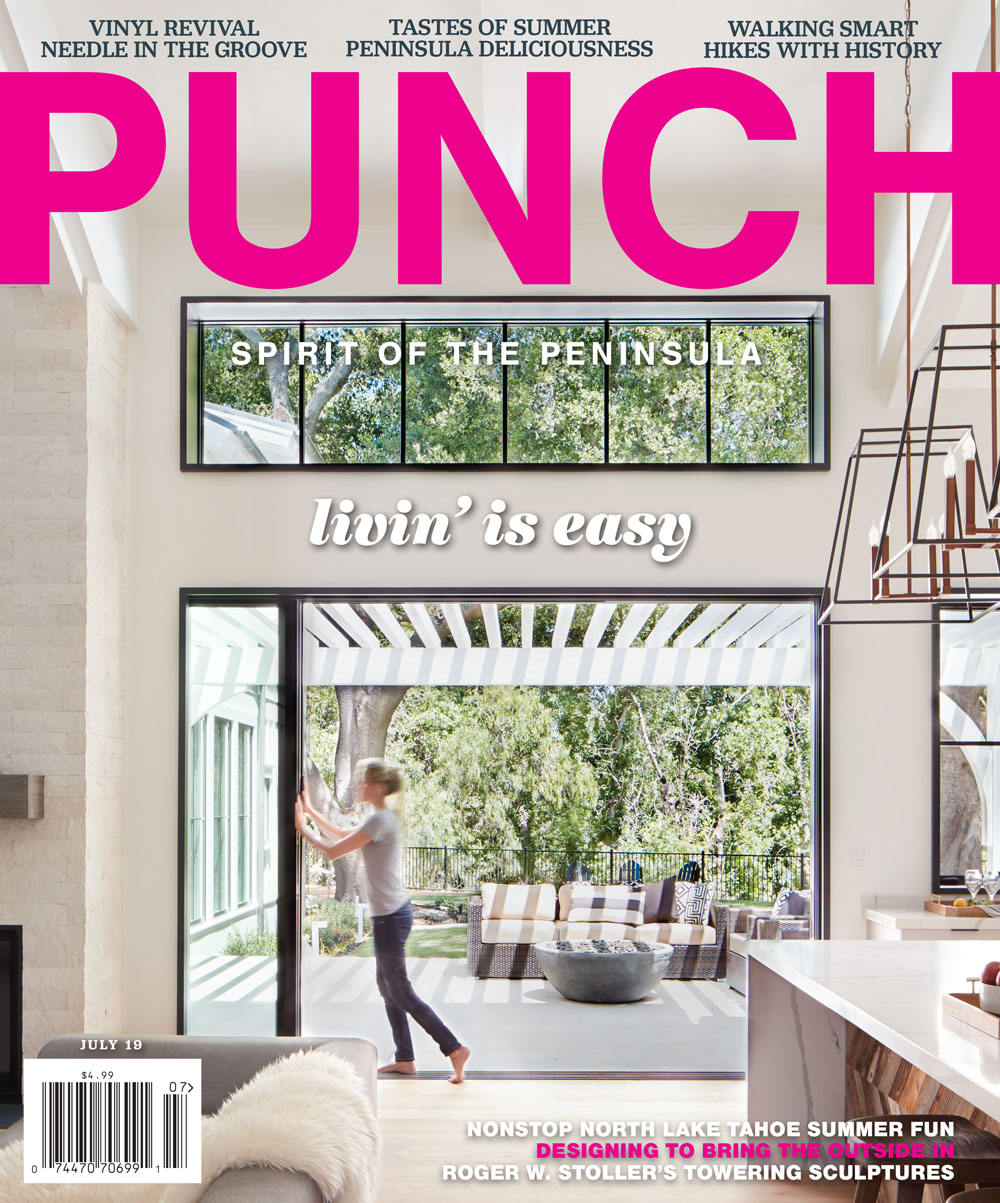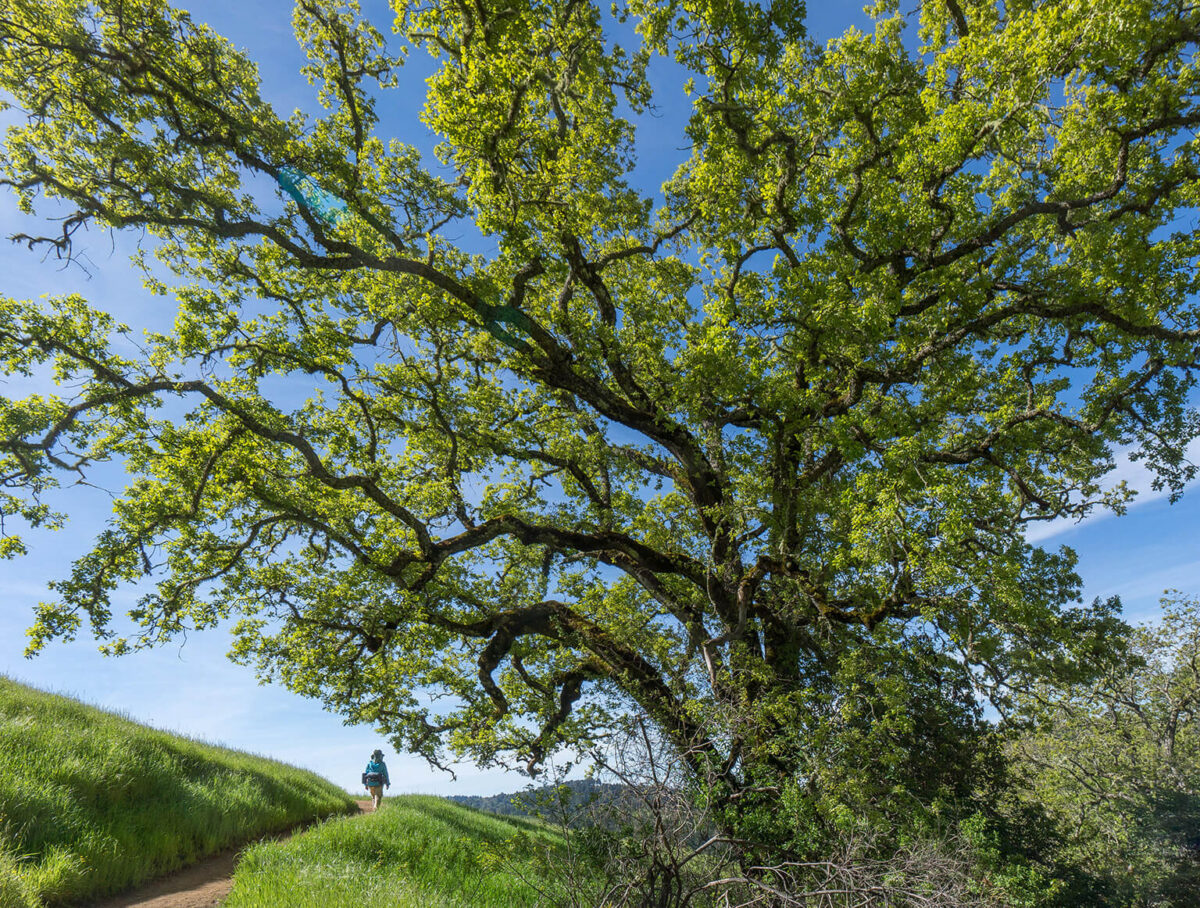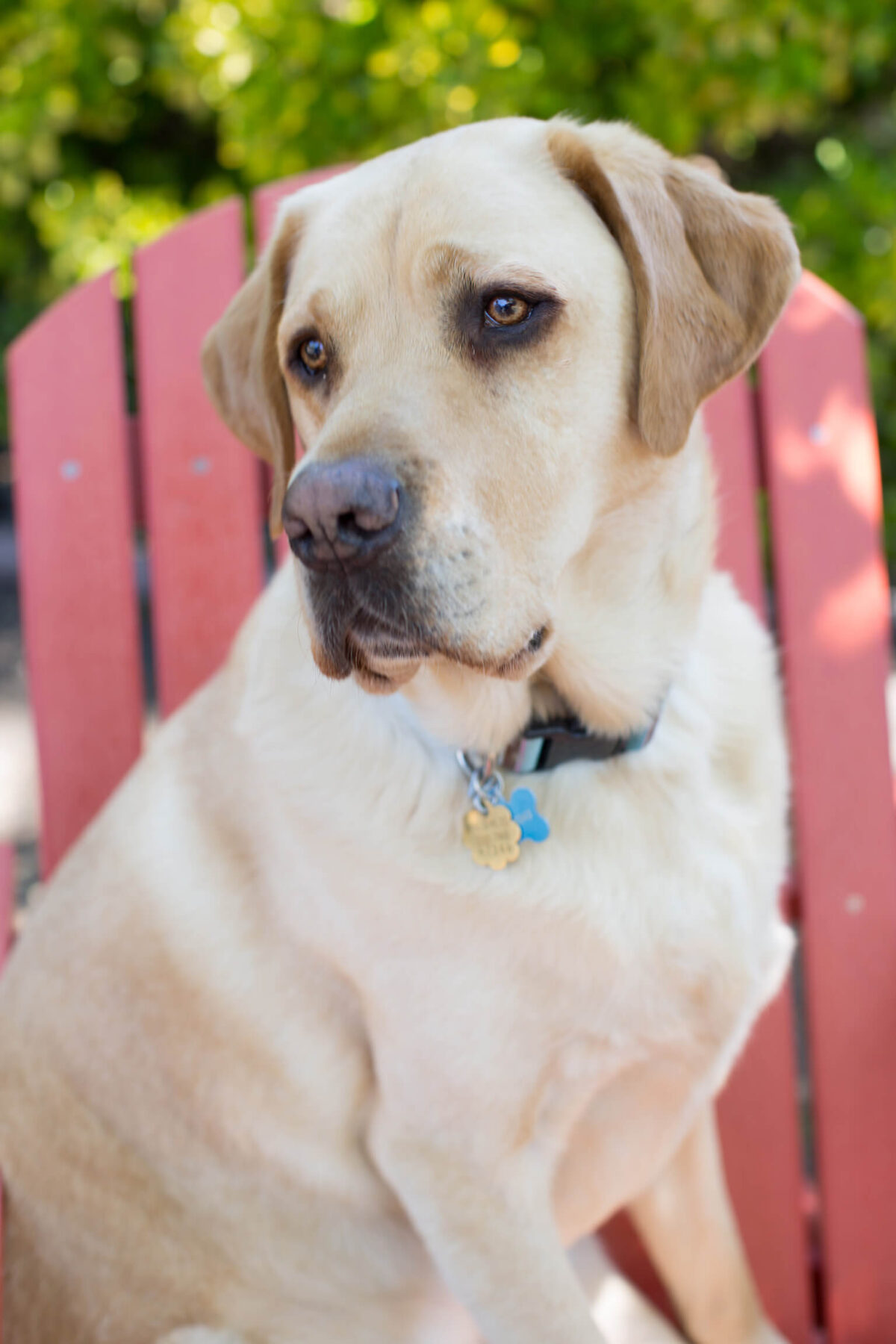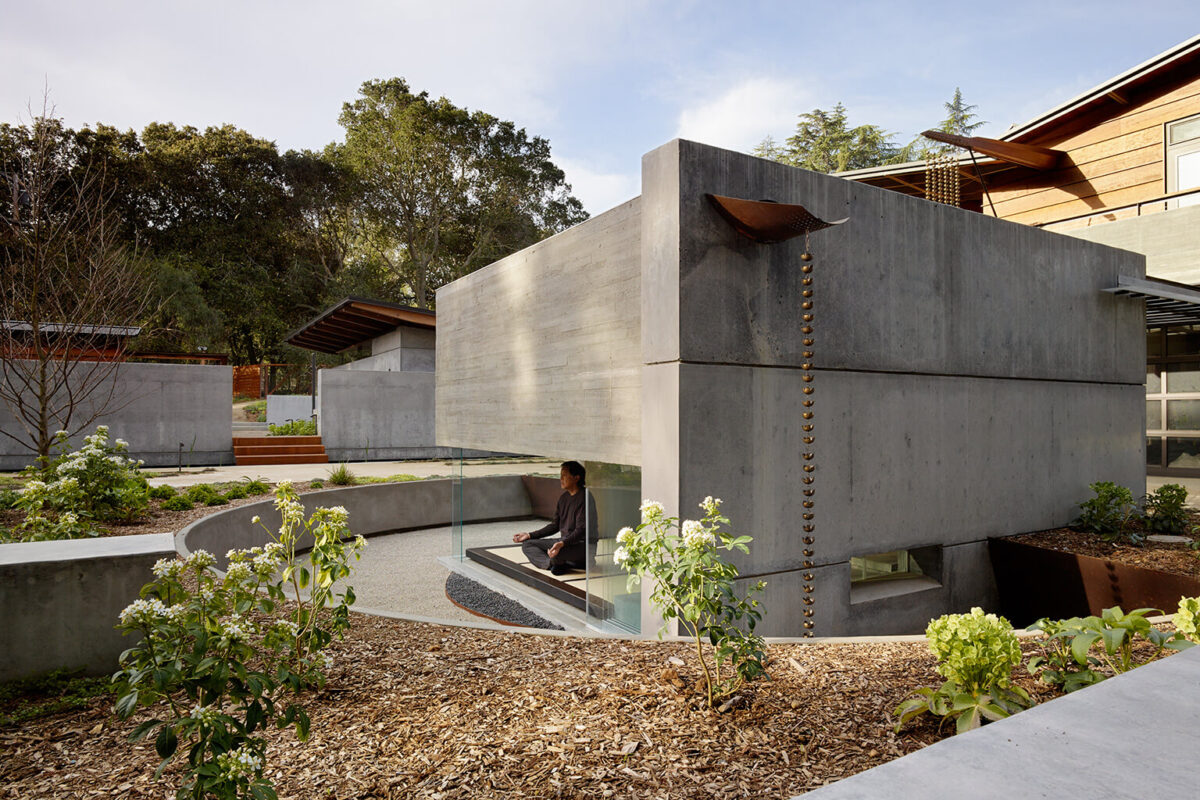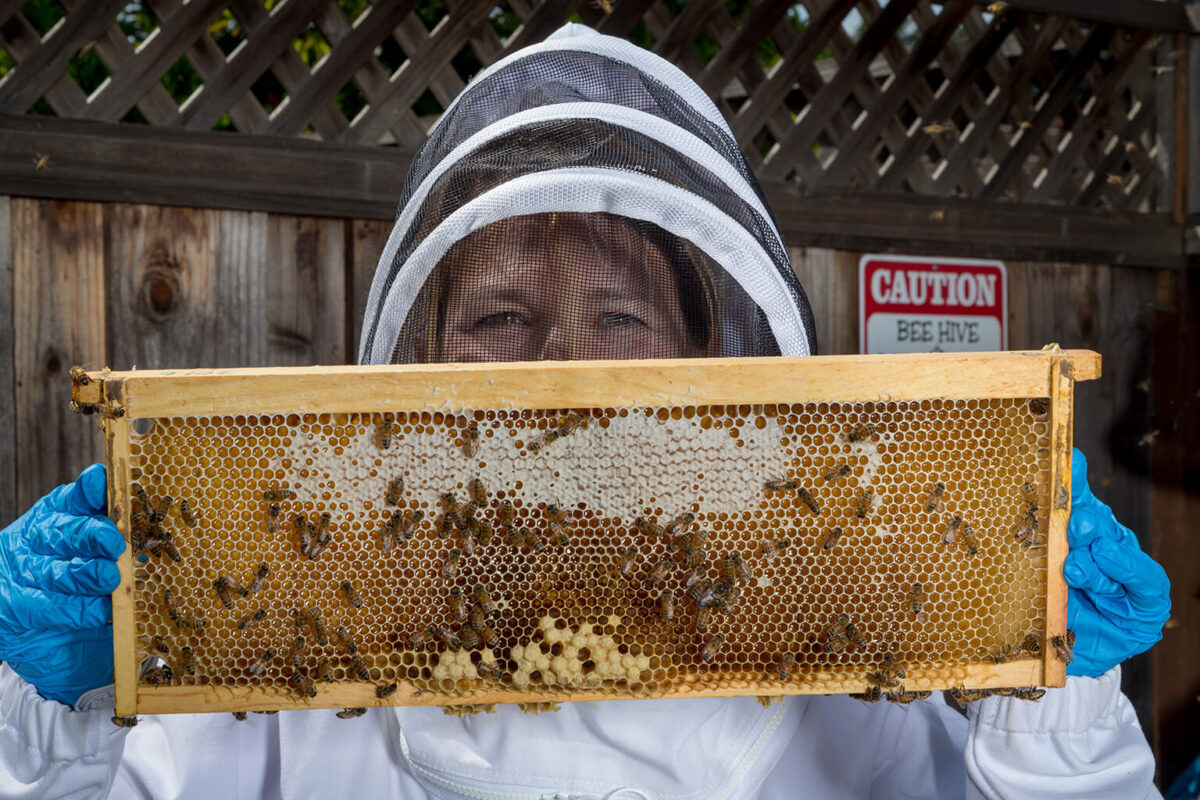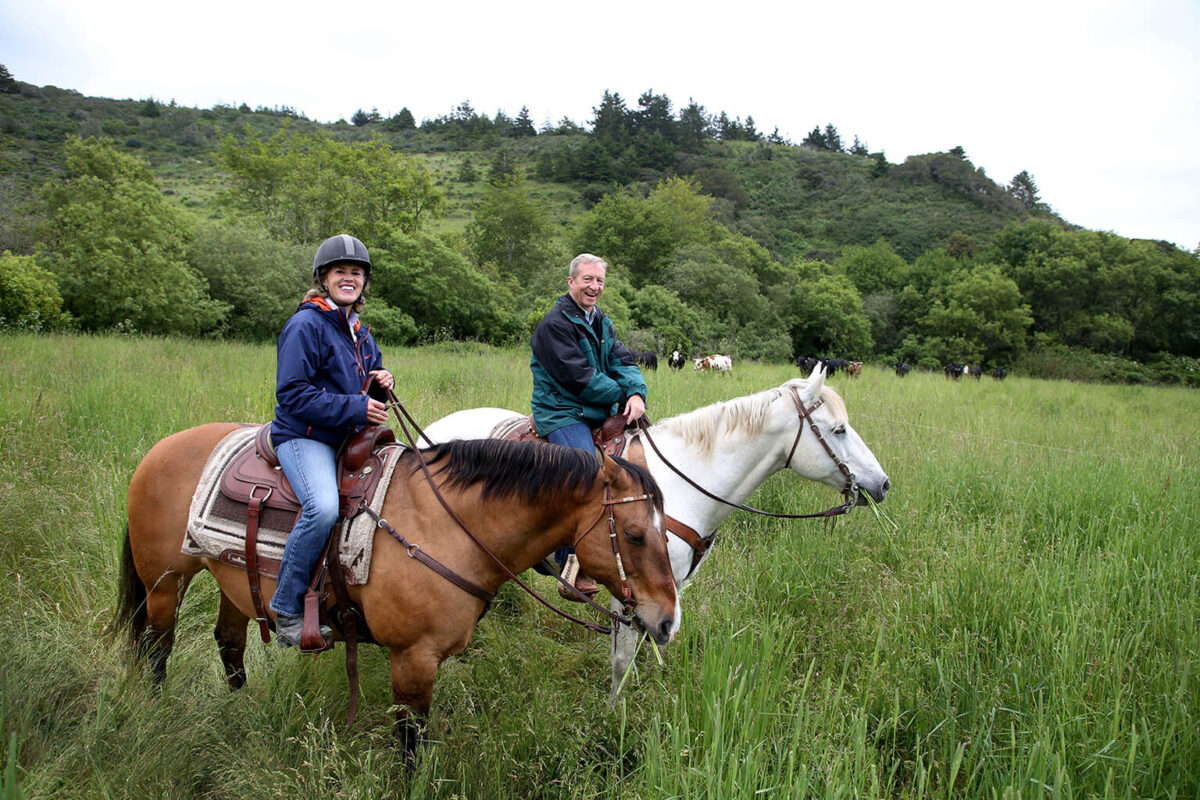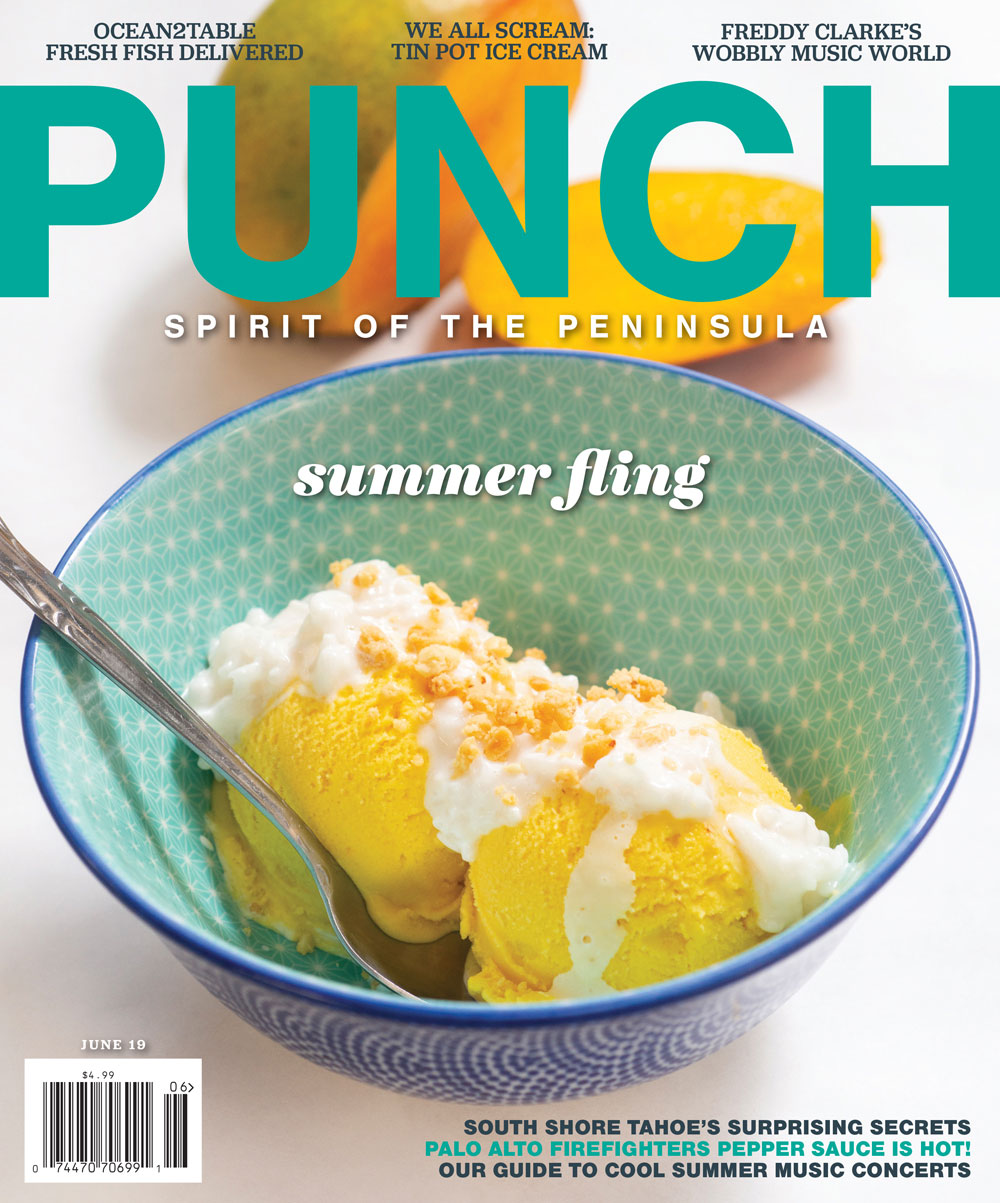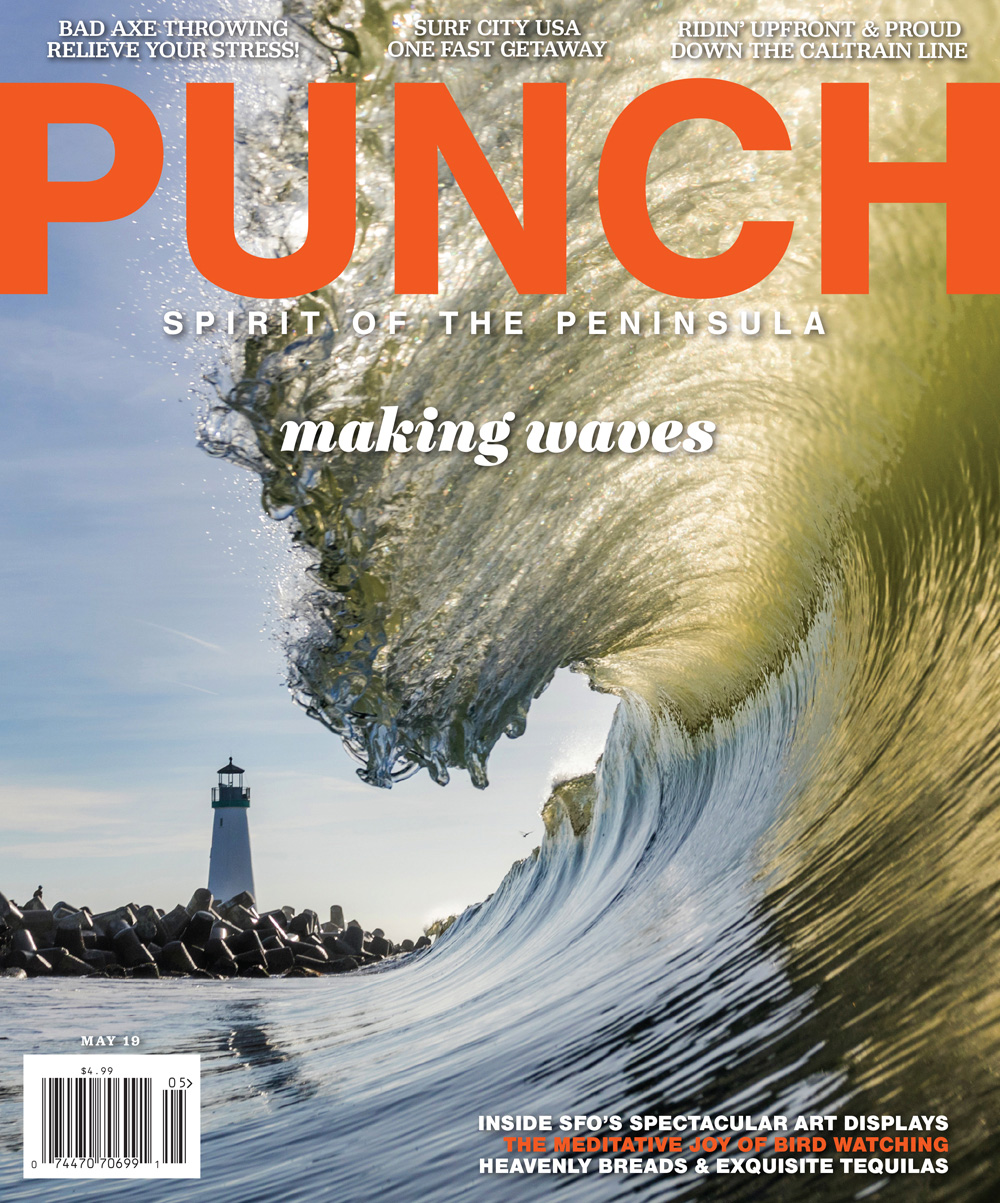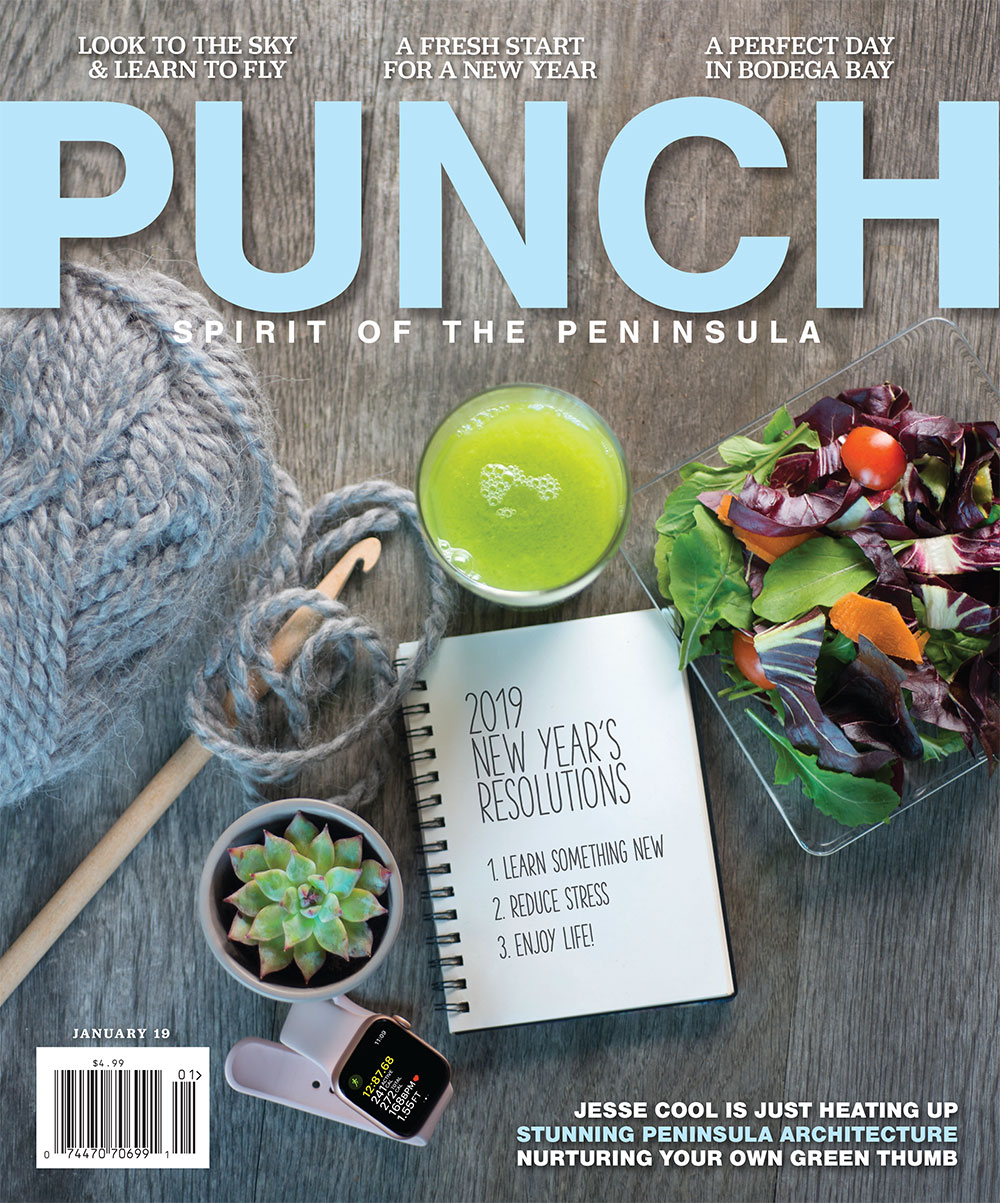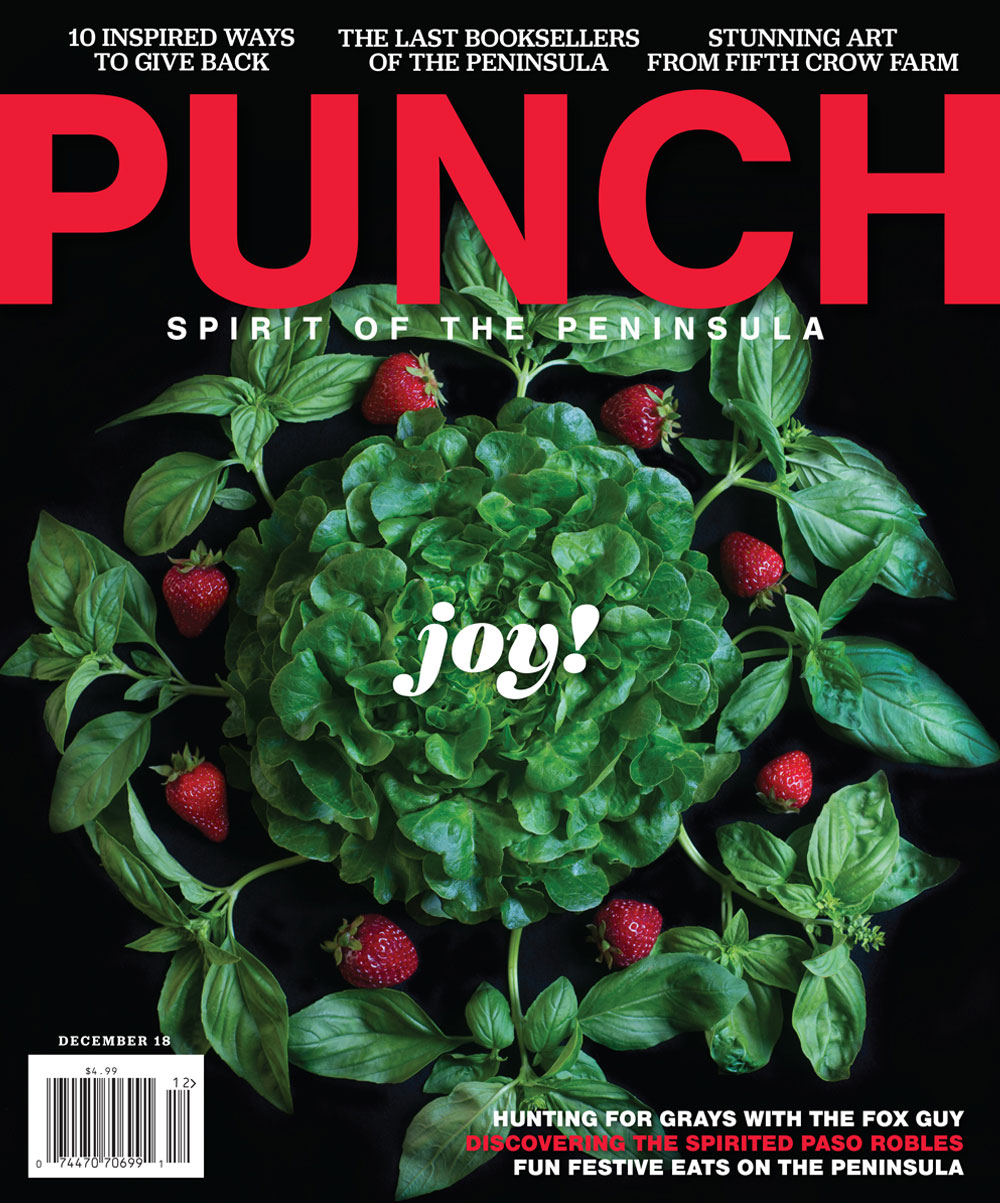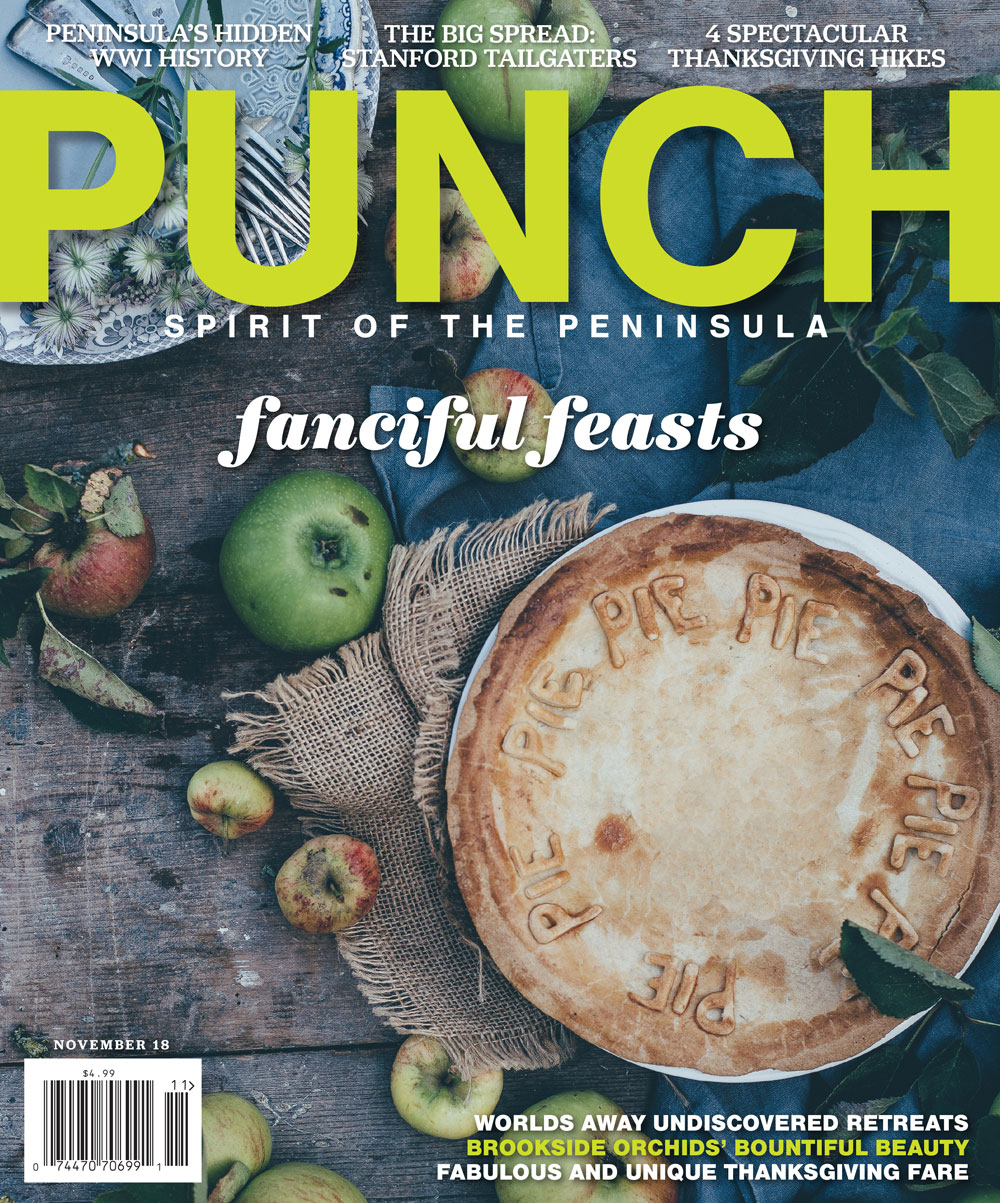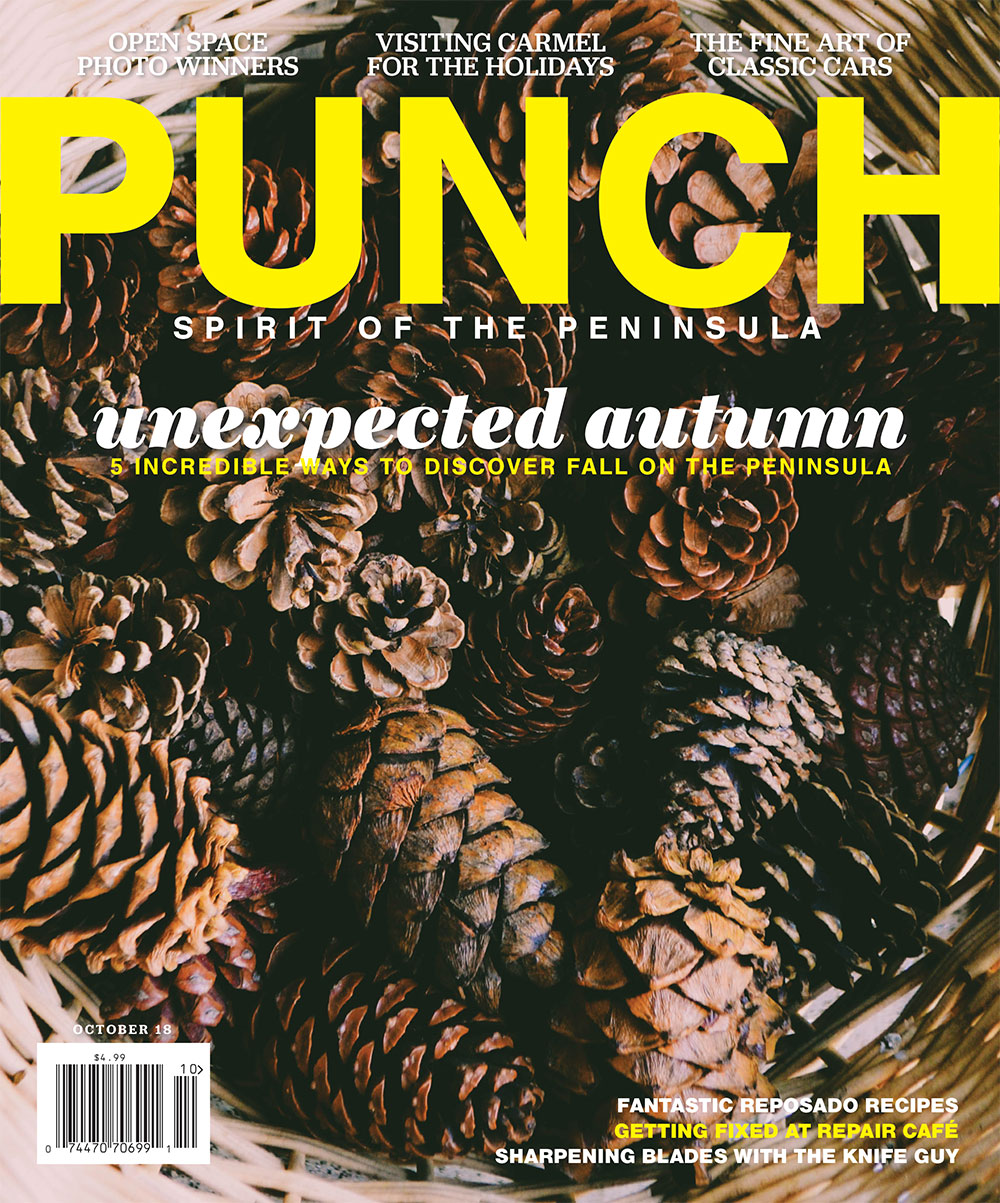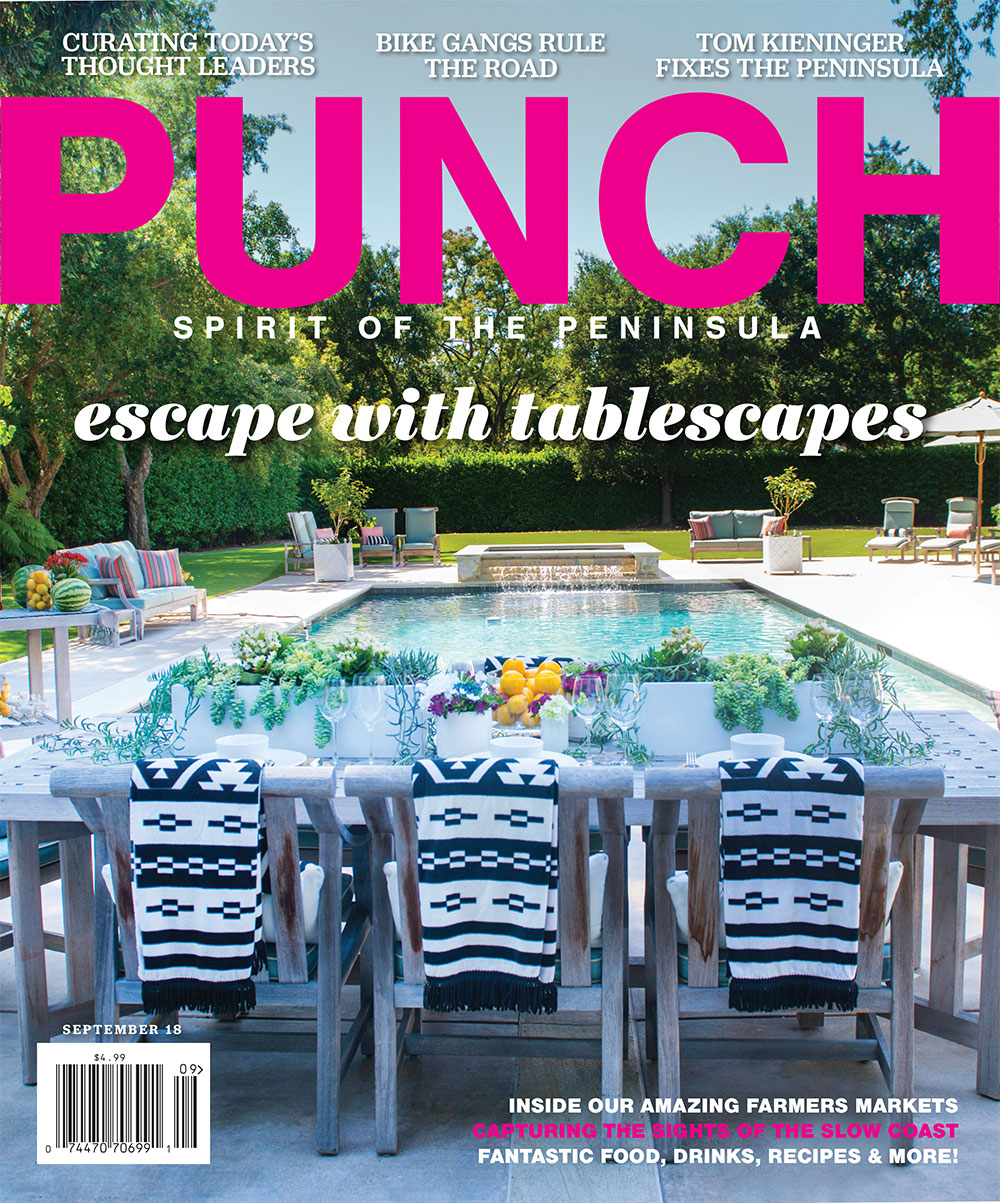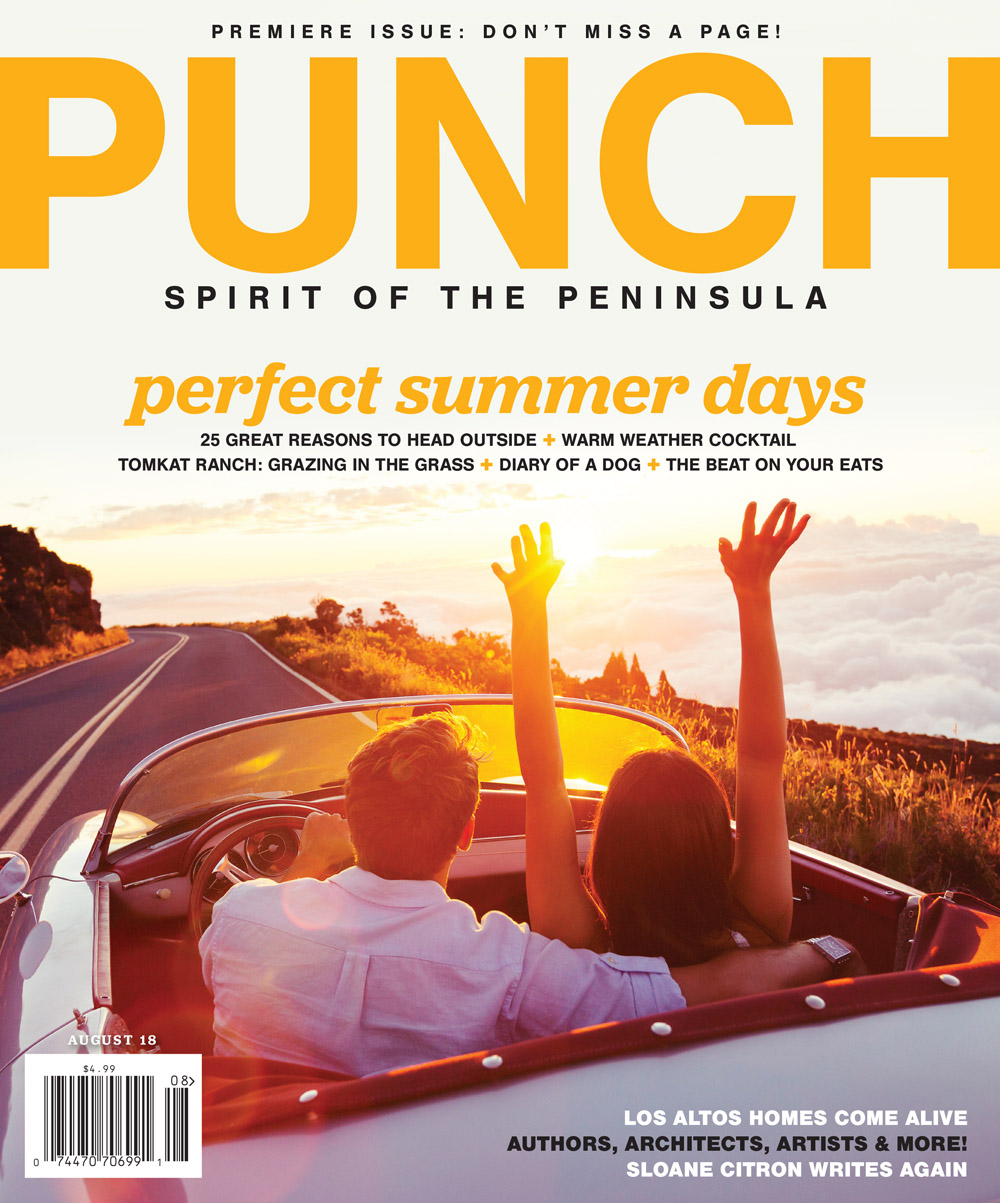Author: punchwpadmin
May 2020
April 2020
March 2020
February 2020
January 2020
December 2019
November 2019
October 2019
September 2019
August 2019
July 2019
Perfect Summer Days
1. fruit picking
The Peninsula has some of the country’s, if not the world’s, best produce, and there’s no better way to get up close and personal with nature’s bounty than by picking it yourself. Portola Valley’s Webb Ranch opens their gates all summer to anyone who’s willing to work a little for their organic fruit. Pros know to wear clothes you don’t mind getting dirty and plenty of sun protection, and that if you have to tug hard on a blackberry or nectarine, it’s not ready; ripe fruit practically falls off into your hand. Check out the ranch’s pages on Instagram or Facebook for the most up-to-date information, including photos of exactly which trees and bushes are ready to be harvested. After a $4 entrance fee per person, each pound of fruit is $5. Find updated hours and directions to the ranch at webbranchinc.com.
2. bair island
The largest island in the South Bay, Bair Island is located right off the Peninsula coast, and seeing it for yourself is a surprisingly attainable goal for this summer. Just join Outback Adventures’ kayak tour out to the island and through the twisting waterways around it. Tours launch from Redwood City; get more information by calling 510.440.8888.
3. glamping
Whether you love the term or love to hate it, glamping does offer the best of both worlds for a summer getaway. You can enjoy the same remote, beautiful locations that you’d visit on a traditional camping trip, but with some of the added comforts you’d enjoy in a hotel. To add some retro flair to your glamping trip, rent a vintage Airstream trailer from GoSilver. You can have a trailer and a tow vehicle delivered directly to your house or attach the Airstream to your own car at their San Jose facility. Once you’re ready to hit the road, you can pick any destination between Big Sur and Napa Valley for your adventure. Rentals start at $275 per night; more information is available at letsgosilver.com
4. learn to surf
Though we’re located so close to a beautiful coastline, not everyone lives the classic California lifestyle of surfing every morning. If you’ve never been on a board, the licensed instructors at Sea, Surf & Fun Surf Shop in El Granada will have you hanging ten in no time. Choose between a group lesson and a private one, or you can even schedule a team-building event for all your coworkers. Bring your own wetsuit if you have one, but the shop is also happy to provide one along with your board. You’ll meet for your lesson in the parking lot across the street from the shop at 531 Obispo Road, but for more detailed directions and to see the full listing of classes, check out the shop’s website at seasurffun.com.
5. walk along the reservoir
With a paved path open to bikers, strollers, horseback riders and everything in between, there’s a way for everyone to enjoy the Sawyer Camp Trail. This San Mateo spot has some of the best views of the Crystal Springs Reservoir on the Peninsula, while history buffs and plant lovers will want to visit the 600-year-old Jepson Laurel tree. You can acess the trail off of 280 via Bunker Hill Drive; find more information and detailed directions at parks.smcgov.org
6. go off the grid
Since they hosted their gathering of food trucks in 2010, the event organizers at Off the Grid have become the best way to access some of the best mobile eats from the Peninsula and beyond. Off the Grid veterans and newbies alike should make time this summer to visit their Friday gathering at Devil’s Canyon Brewery in San Carlos. In addition to food trucks in the venue’s beer garden, the weekly event features a live band, craft beer on tap, and even Devil’s Canyon’s homemade root beer for kids, who are welcome as well. If you do choose to indulge in a few stouts or IPAs, you can feel epically warm inside because of the brewery’s “Cheers! for Charity” program, which donates a portion of the beer sales during Off the Grid to a local non-profit. See what bands and trucks will be at each event at devilscanyon.com/Fridays
7. rock climbing
Rock climbing is the perfect way to get outside and test your strength and agility, but no one should just start scaling cliffs on their own. Instead, let the instructors at Castle Rock Climbing School in Los Gatos show you the ropes, literally. If you’re new to climbing, start with their “Go Climb Outside” session, a four-hour introduction to the equipment and skills you need to explore the many amazing rock formations on the Peninsula. Call the school at 408.833.8308 to check availability; if even the beginner class is out of your league, visit Planet Granite in Belmont to get your feet wet on their indoor walls. See facilities on their website planetgranite.com/bl
8. local wine tasting
With so many winemakers on the Peninsula, you could easily do your own winery tour this summer without trekking north to Napa. Start your journey at Domenico Winery in San Carlos, where you can drop in for a flight of five wines ($15) any weekend. To make a reservation or see which days a live band will be playing in the tasting room, check out domenicowinery.com/visit-us.
9. tour a linear accelerator
If you’ve driven past the nondescript concrete sign on Sand Hill Road in Menlo Park that simply reads “SLAC” a thousand times and never given it a second thought, this summer is the perfect time to discover what you’ve been missing. SLAC, which stands for the Stanford Linear Accelerator Center, is a cutting-edge research facility run by the U.S. Department of Energy. The laboratory’s centerpiece is a two-mile-long building that functions as a linear accelerator, which allows scientists to send microscopic particles shooting at incredible speeds and observe their behavior. Twice a month, SLAC opens their doors to the public and runs guided tours of the state-of-the-art facility. Lean more and register for a tour at slac.stanford.edu.
10. day in pescadero
With one trip to the seaside town of Pescadero, you can visit some of the Peninsula’s oldest businesses still in operation. Customers have been crowding the dining room at Duarte’s Tavern (202 Stage Road) since it opened in 1894, although the famous pies are a relatively recent addition to the menu since they weren’t added to the menu until the 1930s. Down the road at the Arcangeli Grocery Company (287 Stage Road) which was founded in 1929, pick of a loaf of homemade bread made with local artichokes or a bottle of homemade pasta sauce.
11. stargazing
Warm summer evenings are the perfect time to learn more about the night sky, and you can take your backyard stargazing up a notch with the Peninsula Astronomical Society. The group hosts “Star Parties” in local parks, and every week they also run programs at the Foothill Observatory in Los Altos. Every clear Friday night this summer, you can lookat at the wonders of space through a computer-controlled 16-inch Schmidt-Cassegrain telescope. For more information about the group, check out their website at pastro.org.
12. digital drive-in
Though almost every town on the Peninsula once had its own drive-in theater, changing times have almost made this summertime tradition extinct. Luckily, you only need to make the short drive to the West Wind Capitol in San Jose to travel back to the golden age of drive-ins. Some things have been updated—instead of tinny clip-on speakers, you tune into a special FM radio station to listen to the show, the screens are digital, and the theater’s listings include recent family-friendly releases. Tickets start at $5 a person at the Capitol’s weekly “Family Fun Night,” and parents will be glad to know that kids under four are always free. Visit westwinddi.com/locations/capitol to see what’s playing.
13. pizza & porsches
Don’t be fooled by AutoVino’s plain-Jane outside appearance. This Menlo Park warehouse is home to some of the Peninsula’s coolest cars and finest wine collections, and the best part is that they open the doors to the public. Stop by for a weekend wine tasting or a lunch of wood-fired pizzas, and while you’re there you can see everything from a mint-condition 1940 Ford Deluxe to a just-off-the-production-line Ferarri. Check out the Facebook page for the most up-to-date details on public events, or visit their website at auto-vino.com.
14. goat yoga
If you just want one great photo from this summer, make the trek to Lemos Farm in Half Moon Bay. The farm hosts visiting yoga teachers in their barn, and once the class gets started some of the barnyard’s newest residents join in—a herd of baby goats. The goats wander around while students practice their tree poses, and might even jump on your back when you move into downward dog. If the cuteness sounds too distracting to get any real yoga practice in, don’t be concerned. Each class ends with a goat bonding session where you can visit with the animals to your heart’s content. Sign up for the next class at lemosfarm.com/activities/goat-yoga.
15. cooking classes
With the farmers markets bursting with fresh produce, this is the perfect time of year to expand your culinary horizons. Improve your meals with some of the Peninsula’s best chefs with Cozymeal, which lets you book cooking classes in your own home. The service can provide everything from a private lesson for a couple to team-building activities for a group of 40. Visit cozymeal.com for more details and to see their current class offerings.
16. learn how to garden
If you’ve ever toured the grounds of Filoli you’ve likely been impressed by their botanic gardens. Though you probably don’t have 16 acres in your own backyard to convert into a wooded masterpiece, you can still take some of the gardens home with one of the estate’s horticulture classes. With topics ranging from the general, like learning how to plant a basic vegetable plot, to lectures on expert topics like pruning a bonsai tree, gardeners of every level will be sure to find something to inspire them. See the full listing of classes and sign up at filoli.org/classes.
17. hiking at el corte de madera
Since you probably can’t visit all of the Midpeninsula Regional Open Space District’s 25-plus sites this summer, at least check out Redwood City’s El Corte de Madera Creek Open Space Preserve. The unusual Tafoni sandstone rock formations, pictured, are worth the trip, but there are also 36 miles of trails to explore. The preserve is accessible via Skyline Boulevard; see a map at openspace.org.
18. swimming at coyote point
To answer the obvious questions right off the bat: yes, people do swim in the San Francisco Bay, and yes, the water is pretty cold. But at this time of year the temperature might rise into the 60s, so head to San Mateo’s Coyote Point Recreation Area to try out open-water swimming. The area is located in a smaller cove protected from the strongest winds and waves on the bay, so it’s a good place to dip your toe into a new hobby. The point is accessible off of 101 via Airport Boulevard.
19. archery lessons
If you’ve ever dreamed of being Robin Hood or Hawkeye, use this summer to hone your archery skills at the Stanford archery range. Group lessons are taught by members of the university’s nationally ranked team, and they can accommodate anything from a lone bowman to bands of prospective Merry Men of up to 10 people. Lessons are $30 a person, and are held on Saturdays. Sign up at archery.stanford.edu/group-lessons
20. learn to fly a drone
You might assume from its name that the Hiller Aviation Museum focuses on the history of flying objects. But in keeping with its location in a hub of innovation, the museum is currently displaying some of the newest crafts to take the sky—drones. Visitors are invited to fly a nano-drone equipped with a camera and First Person View technology, which includes a pair of goggles that allow you see exactly where your drone is flying as if you were a tiny pilot in the cockpit. After you master hovering and landing, race through the “DronePlex” obstacle course to see if you have what it takes to join in this new aerial sport. Class times and more information is available at hiller.org/event/drone-plex.
21. distillery tour
Though small wineries and craft breweries seem to be popping up everywhere, it’s a little more unusual to see someone practicing the Old-World technique of distilling liquor in copper pots. But that’s how they make their award-winning spirits and liqueurs at Essential Spirits Alambic Distillery in Mountain View. Groups of at least four people can call the distillery at 650.962.0546 to schedule a private tour and tasting. Just a note—California law only allows the sale of spirits distilled from fruit, like their pear brandy, on-site, so if you fall in love with one of their rums or vodkas, the staff can direct you to a local liquor shop that stocks their wares.
22. buy fish off the dock
Everyone knows that fishermen regularly troll the waters off the Peninsula, but have you ever thought about taking home part of their catch for yourself. Pillar Point Harbor in El Granada allows you to get the freshest possible fish, and you can even buy your dinner directly on the pier. Just call the harbor’s “Fish Phone” at 650.726.8724 on the day you’re planning to stop by, and a recording will tell you what the boats have been bringing in. If you need some help getting your dinner ready for the grill, there are a number of local fish markets happy to clean or filet your purchase for you.
23. hidden gems of stanford
Even if you’re a local and you think you’ve seen everything on the university’s sprawling campus, there are probably a few spots you still need to check out. When you enter campus from Junipero Serra, take a detour to visit the Papua New Guinea Sculpture Garden. Since it’s almost hidden behind a grove of trees, few visitors see the collection of traditional New Guinean carvings, made by a group of visiting master carvers from the island. While Stanford’s Cantor Art Center is more well-known, many people don’t realize that one of the museum’s most unique works isn’t located in a gallery. Located across the street is notable land artist Andy Goldsworthy’s Stone River, made of blocks from damaged buildings that were recovered after the Loma Prieta quake. Just a short walk towards El Camino is the Arizona Cactus Garden, which was built for the private enjoyment of university founders Jane and Leland Stanford when the grounds were still a private residence. Some of the cacti and succulents on display are over 100 years old, and the garden was supposedly a popular place for courting students in Stanford’s early days.
24. village hub
Although Woodside might look like the set of a Western film, you can practice New-Age hobbies like mindfulness meditation and yoga classes at the town’s new community center, The Village Hub. The hub also hosts monthly events like a popular Canine and Coffee meetup. To see a full listing of their calendar, visit thevillagehub.org.
25. tour a farm
You’ve probably enjoyed Harley Farms’ award-winning goat chevre on a cheese plate or in a dish at a local restaurant. The goats responsible for that delicious cheese live on a beautiful cliffside in Pescadero, and the cheesemakers welcome visitors. On a scheduled tour, you’ll get a chance to learn about the farm’s history, meet some goats and even taste samples of cheese in the barn where it’s made. If you don’t have time for a long stop but still want to get a taste of Harley Farms, their cheese shop is open from 11 AM to 4 PM on weekends. Find dates and times at harleyfarms.com/tours.
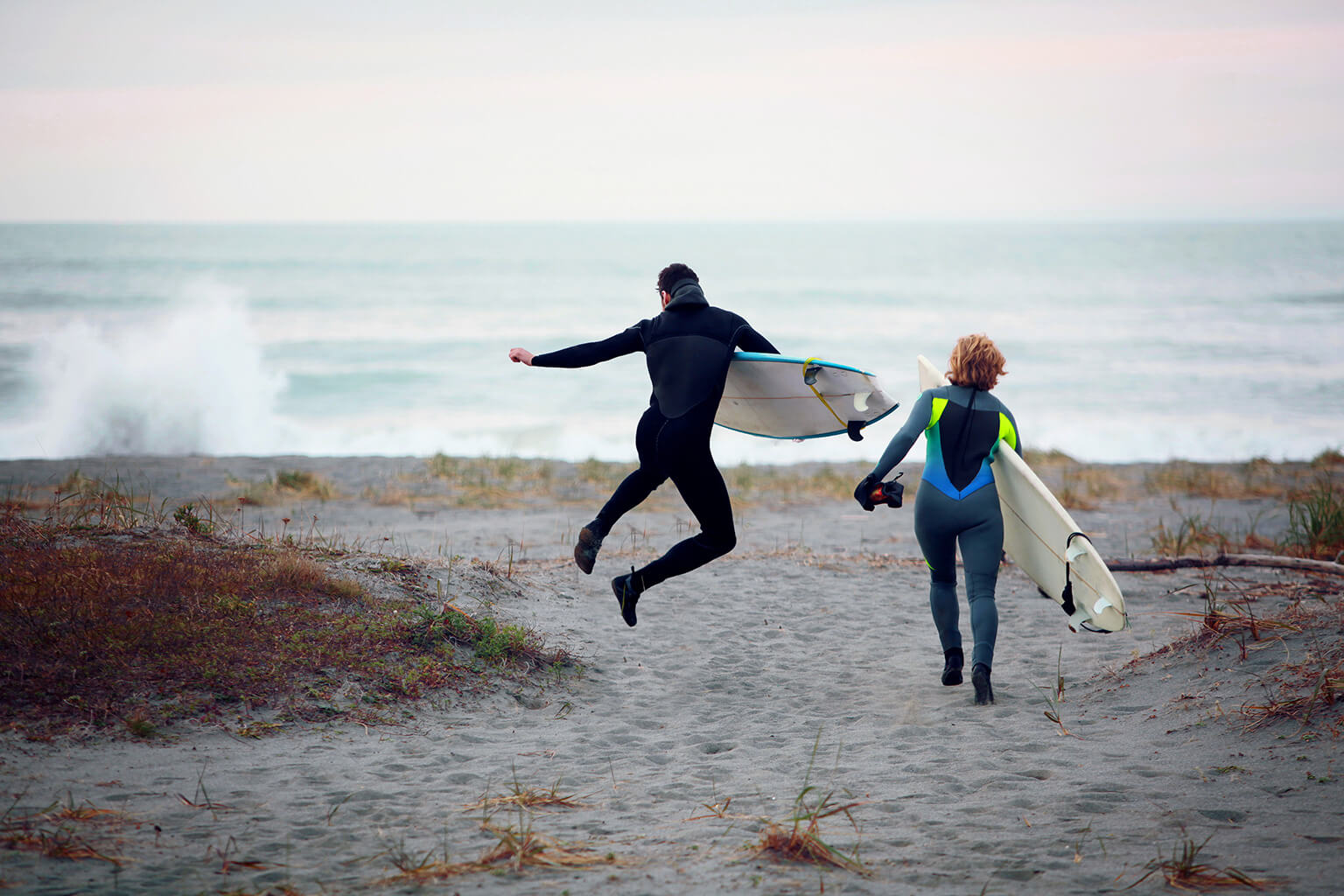
Perfect Shot
A hiker enjoys solitude and beautiful views on the Bella Vista Trail in Monte Bello Open Space Preserve. This summer, connect with nature close to home in a Midpeninsula Regional Open Space District preserve near you. Learn more about Midpen’s 26 preserves that are free and open to the public daily at openspace.org.
Diary of a Dog
I was born at the Guide Dogs for the Blind campus in San Rafael on May 30, 2011. All Guide Dog litters have the same first letters in their names, so my siblings are Alamo, Angeline, Anson, Arbor and Aubrey. If you think our names sound funny, it’s because no two dogs active in the program can have the same name, so we have to get creative. When I was eight weeks old, I went to live with my puppy raisers Robin and Warren in Palo Alto. With the help of lots and lots of treats, they helped me learn how to sit and stay. Since Guide Dogs go everywhere with their partners, we did field trips to places like Costco and the fire station so we could get used to any situation. Robin and Warren’s niece Alana helped with my training too, and she took me to her classes at Palo Alto High School. Although I aced all my activities, my trainers discovered one habit that I never grew out of—I drooled. Since a blind person can’t notice a puddle that someone could slip in, I wasn’t a good fit for the program. Instead, I use all the skills I learned as a Guide Dog puppy to work as a therapy dog. With Warren, I visit sick humans at El Camino Hospital and Robin takes me to places like the library, college campuses and detention centers where I meet humans’ puppies, or “kids,” as they call them.
Palo Alto’s SoulCycle King
Of course there is no shortage of places to move our bodies and expand our minds offered by the natural topography and climate of the Peninsula. Even so, the benefits of cross-training with variance in your workout routine are many and well-documented. And while solitary hikes and jogs are fantastic, sometimes you’ll crave a bit more community while getting your sweat on. When that craving hits, hit SoulCycle.
Let me preface this with an admission: I am a SoulCycle addict. I go when I’m feeling down to pick myself up and when I’m happy to feel even happier. I go when I’m lethargic to wake myself up and when I’m feeling energetic to dance it out in the dark on a bike that goes nowhere. It’s also why I knew Kamelle Mills—Palo Alto SoulCycle instructor extraordinaire-—was the perfect wellness guru to demonstrate what you’ll come to expect in our Due West section.
Read on and then go #klipinwithkamelle at the Stanford Shopping Center studio. That is, if you aren’t already one of the #kamellionaires.
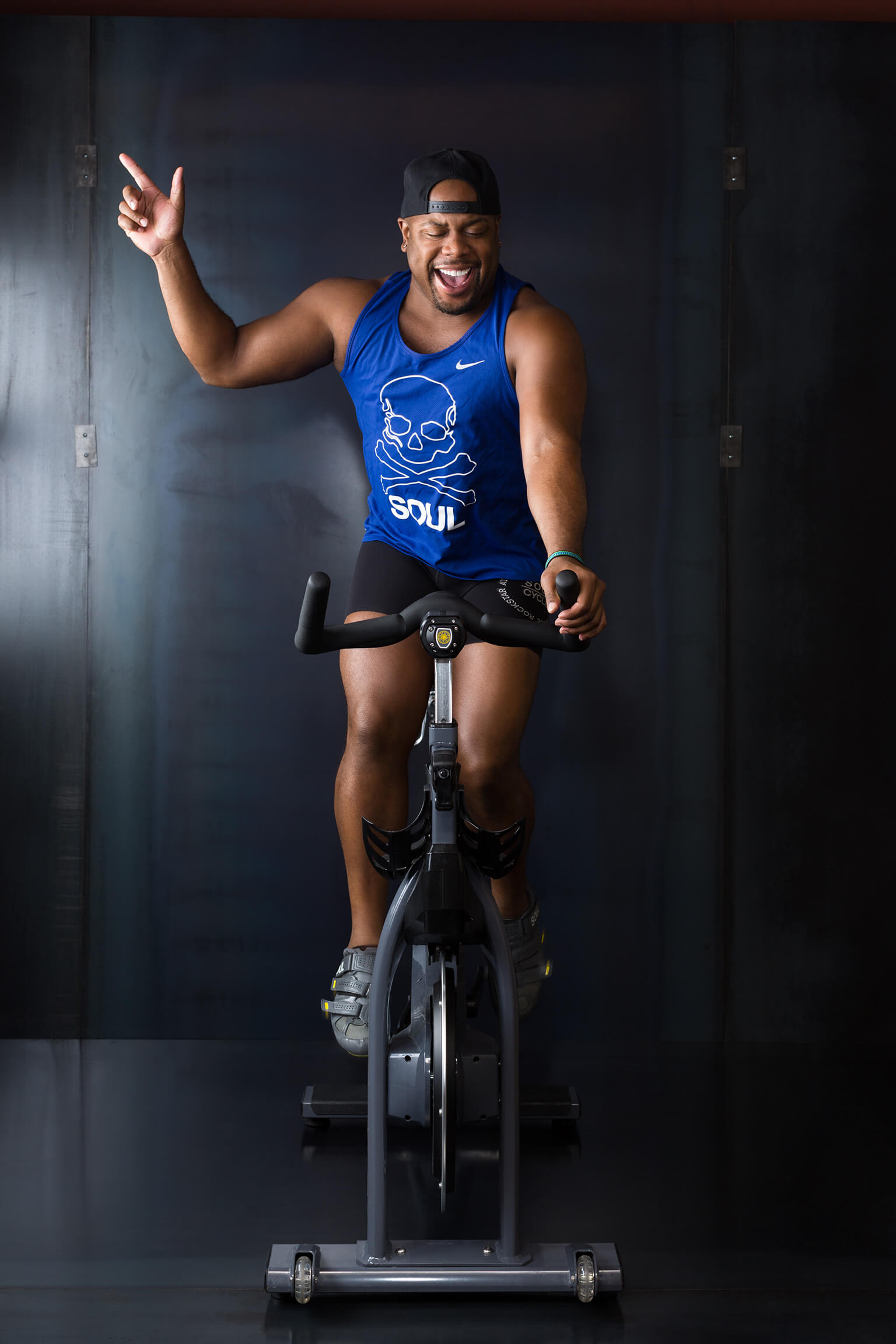
How did you start at SC? Did you feel called to do it?
Back while living in NYC, I was invited to a SoulCycle community ride! I was scared, apprehensive and reluctant but as soon as I showed up to the studio in NYC, on the corner of 83rd Street and 3rd Avenue, I felt magic in the air. I felt at home. I felt welcomed. I felt my life was about to change forever.
What are some Peninsula locations that feed YOUR soul?
Two of my favorite places are actually on University Ave in Palo Alto.
• HanaHaus (456 University Ave): It’s a workspace and cafe with plenty of room, great vibes and an inspiring ambience. Great for big or small meetings, studying or taking some time for yourself to read or write.
• Local Union 271 (271 University Ave): Great food and amazing wine. The ceilings are high and the love is real. One of my favorite places to eat!
What is your daily routine to take care of your mind and body?
I want to take a moment to testify to the healing powers of NAPS! AMEN! In addition to trying to stay rested (this is something I’m trying to work on; some days are harder than others), when I’m alone I love to simply turn off music, put down my phone, shut the laptop off and just sit. Just sit and feel alive. We strive so hard to live a full life yet we never FEEL it. I want more of that. Sitting and feeling alive.
What is some of the advice/encouragement you give most to your riders?
The hardest lesson I’ve learned is that you have to save yourself. YOU have to take care of YOU. Your mental and physical health, your happiness, your quality of life are all your responsibility—this is terrifying but also exciting. Growing up, it can be perceived that outside sources and external elements are what make you happy; a relationship, a job, gifts or where you live. Those things may be complementary, but joy starts within. You can and should be your own hero. You have to put “S” on your chest and save yourself!
For what reasons ASIDE from well-being do you see people coming to SC?
Community is one of my favorite nuances of SoulCycle. You have a family bound by sweat and tears. You develop relationships that are cultivated in the studio but flourish outside of it as well.
People can get competitive in group fitness—especially with so many experienced and fit riders around the SC studios. How do you advise people to reconcile that with staying true to oneself/listening to your own body/“staying in your own lane”?
There is no competition or judgment in my class. It is incessantly emphasized that we are one team. Moment to moment, beat by beat, push after push, I encourage my #kamellionaires (people who ride with me often/people who #klipinwithkamelle) to cheer on the people around them. I truly believe if we can see strength in the person next to us it forces us to acknowledge strength within ourselves.
Cheng Design
If you ask Fu-Tung Cheng what a favorite snapshot of one of the homes he has designed on the Peninsula might look like, he’d say one that captures the elements of time and balance that go into his work, one that shows the influence of art in his design and also, one taken at dusk.
What is so fascinating about Cheng’s work is that he does not have an architectural background, but an art background. For this reason, he sees things in their materiality and space, rather than in terms of an orientation based solely on function. “Form follows function” is a common architectural adage, and while Cheng respects that, he doesn’t always follow it.
As an artist, Cheng comes from the school of thought that says you make and do things for yourself, and his current staff at Cheng Design reflects that. They are a tiny but mighty team of just four talented people—Cheng, his right-hand architects Ann Kim and John Chan, and architectural designer Frank Lee. Cheng has found that with a small group, they can maintain the intimacy of their work on projects, hiring outside engineers and builders depending on the specific needs of a project.
From 1971-1985, Cheng spent most of his time doing the martial art of Tai Chi. He still teaches Tai Chi at Berkeley Buddhist Monastery a few mornings a week as he’s done for 20 years. (Before that, he taught for 25 years at his late Tai Chi instructor’s own place.) During this time, Cheng was getting by doing handiwork and odd jobs and sleeping in a garage. But he doesn’t tell me that for shock value and he didn’t mind having to do it. He is a man who believes you only need what you need, and nothing more. As Cheng naturally graduated to larger jobs, he had to figure out things on his own—how things worked, some smaller feats of engineering and the like. He found that it interested him to be a problem-solver that way, and regularly offered suggestions to his clients about the routes they might take in approaching whatever home issues came up.
Still, he always wanted to go back to school for a degree in art, which he’d tried for at UC Berkeley. Upon attempting to do that, Cheng found out that he’d had an art degree all along! Because of a fluke administrative issue, his physical degree had gotten lost in the UC shuffle, and he was unaware that he’d had enough credits to fulfill the requirement.
As hard as it is to believe when you look at the magnificent photos of Cheng’s work, there is so much more to this man than his design work. Before college, he occasionally hopped freight trains to get where he needed—even across the country. When in Japan on a year abroad studying Japanese art, at 19 years old, Cheng became the head cook for a Tramp Steamer Cargo Ship that had come into the harbor in Yokohama when their existing chef mysteriously disappeared. Back in Berkeley, Cheng participated in many Vietnam War demonstrations from 1968-1972. He even recalls having a conversation with a neighbor in the Berkeley library. That neighbor went on to be one of Patty Hearst’s kidnappers. Suffice it to say, Cheng’s adventures were never boring.
Though he admitted he was in these demonstrations more than he was in class, Cheng was and is a peaceful man—a meditator—and was glad when those tumultuous times eventually led to the relative tranquility of the ‘70s.
Sometime before 1971, Cheng heard a speech at UC Berkeley by a woman who worked with the Wobblies (international labor union) Movement of the ‘20s and ‘30s. He can’t remember her name, but he remembers the crux of her message, which impacted him immensely. She said that change doesn’t come overnight. Real change requires a sound basis and time—maybe even generations. She was speaking politically, but the point is the same and Cheng felt her saying to him: you are the future. That’s when things really started to change for him.
One day, Cheng was in Monterey Market in Berkeley and saw an ad for a run-down house for sale—complete with a description of the squirrels and raccoons that lived on the property and an admission by the owner that he no longer had the desire to work on the house since the death of his loved one (who Cheng later found out was one of the first deaths attributed to the AIDS epidemic). To this day, he isn’t sure what made him do it, but Cheng unpinned the ad, put it in his pocket and rode his bike to the Neilson Street location.
The owner of the dilapidated home literally ran after Cheng once he realized that he might be interested. The two sat and talked about the mysteries of life and death. Cheng talked about his experiences, and the owner, Warren Nettles Garrick, talked about his departed. Cheng felt moved by the story and drawn in by the place’s potential, and Garrick made it possible for the then-23-year-old to hold the home for $250 as he scrounged up the rest of the $1,500 down payment. (The house was $16,500 in total.) The rest, as they say, is history.
Cheng set out to turn the home around—using all found items. He collected used lumber, salvaged pipes and old fixtures from demolition sites. When he heard that a local high school was closing, he hustled there to salvage the wood from their gym floor. That home became Cheng’s laboratory—where he learned to love recycled items and mixing modern elements with time-melded materials to create a timeless look. He still lives there, in that 1,300-square-foot house, now as a very successful architectural designer who could have a place triple its size. But he will never sell it. His daughter would kill him! (She was actually home-birthed with a midwife in her room there.) Ever the pillar of humility, Cheng wouldn’t reveal the current value of the home, but his smile when I surmised that the return on his $16,500 investment was probably astronomical gave it away.
At this house, Cheng created what would become a staple of his present work—concrete countertops. In this he found a leveling of the playing field, as he calls it. He had affluent hedge-fund clients who could afford a whole lot more who wanted just what he had in his little 10x-4-foot kitchen on Neilson Street. The look had enough of a feel of innovation, but not so much that it felt like a trend. It felt balanced; it has an aesthetic from the heart infused with really interesting construction. Cheng later wrote a book, Concrete Countertops: Design, Forms and Finishes (Taunton Press, 2002) about the conception and implementation of his concrete countertops—a book that continues to enjoy sales today.
It’s often said that architects do their best work after their 50s and 60s. This is because it requires experience. You are dealing with people’s very aspirations and you have to use their money to do it while instilling in them the confidence that you can do it well. You have to be able to keep coming up with things that are new and to accept those that don’t work. Only the tincture of time and experience can give that to you. As far as the style of the homes Cheng is designing now, he draws influence from the art of his studies and travels, and also from his Tai Chi practice. The impact of the latter may not be obvious in the aesthetic of his homes, but the process that then creates the aesthetic certainly is. Some of the main tenets of Tai Chi include patience and resilience. In Cheng’s work, these have been invaluable. In Tai Chi he learned yielding and assertion. To roll with the circumstances–which in architecture and home design are constantly changing–but not to get crushed by them and be able to assert once more. Cheng believes that life was simpler in the past; not as tightly wound. You could survive on much less, and that allowed you the latitude to experiment more within your own life and space. You can see this in his work—and life.
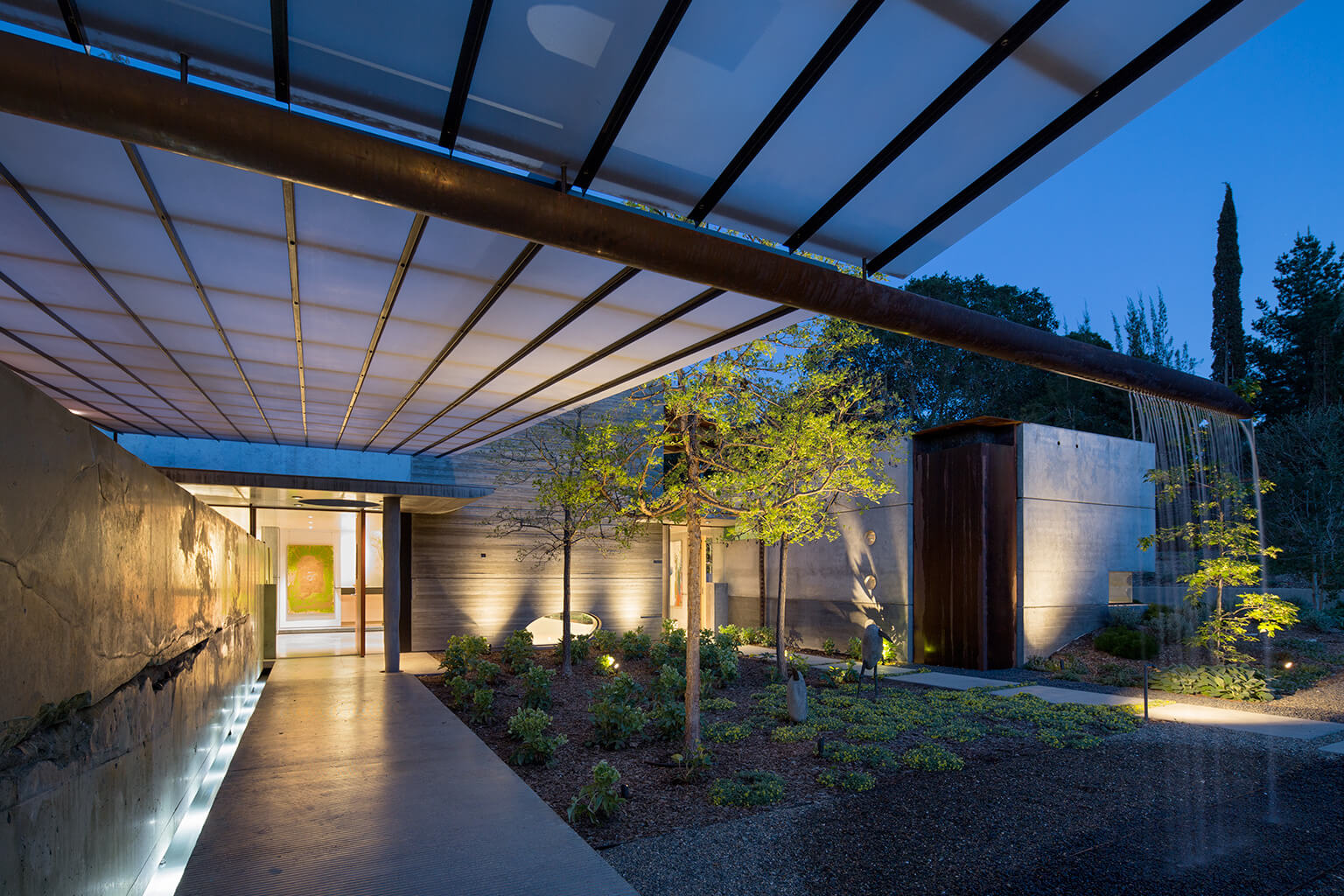
So, what’s next for Cheng Design? Cheng dreams of designing a place of spiritual consciousness. A non-religious building that would be a sanctuary of awareness.
Cheng would tell you that in the next chapter at his firm, he would like to focus on the emotional response people have to the spaces he creates. I see this thread in much of his life and work—all the way back to when he bought the Neilson house from its bereaved owner (who Cheng tells me would be in his 80s and whom I’ve urged him to track down for the “full circle” moment of a lifetime) based on an emotional connection he felt in their discussion.
While touring one of Cheng’s homes in the Los Altos Hills recently, he led me to see the sunken meditation room. “Wow,” I exclaimed. “If I had a room like this, meditation would probably be so much easier!” Cheng walked over to me, slowly pressed his finger to my temple and said, “The room is in here.”
Mama Q’s Honey
When the man in the “Uvas Gold Apiary” truck pulled up outside Roger Quinlan’s home and asked him where he wanted the bees, Quinlan didn’t know what to say. Eventually, he figured out that the truck’s driver was Wayne Pitts, a beekeeper and honey vendor whom Quinlin’s wife Cathy had met at the downtown Los Altos Farmers Market. Pitts had arrangements keep bees in the backyards of over 200 local homeowners, and the Quinlan family was about to become his newest partner. “We’d kinda talked about it, but it wasn’t confirmed that it was coming,” Quinlan says, referring to the four-foot-tall wooden box that was his first introduction to the apian world.
The family soon got used to sharing their Los Altos home with thousands of buzzing insects, and Quinlan observed a handful of Pitts’ monthly visits to check on the hive. But in 2015 when Pitt wanted to withdraw from the commercial side of beekeeping and asked if Quinlin would be interested in helping with Pitts’ Peninsula clients, he was leery.
“I had no idea what I was doing,” the software executive admits. But under the supervision of another local beekeeper, Quinlan was able take over the management of his own backyard hives, including removing the frames on which the bees build their combs to make sure the insects were healthy. As soon as he had gotten used to this arrangement, fate threw another wrench in the works—the Quinlan bee colony was doing so well that it needed to be split into another hive. Otherwise, the bees would swarm, with half of them abandoning their neat box to seek a new home somewhere else in residential Los Altos. So far, his neighbors had been fine with the bees, but Quinlan wanted to avoid triggering what he calls “people’s natural fear of flying, stinging insects.”
But through a combination of relocating wild bees, birthday presents and other unforeseen circumstances, Quinlan soon had six hives in his yard. Since his home sits on a little more than an acre and the Los Altos Municipal Code Section 5.10.010 clearly states that “a maximum of one honey bee hive shall be allowed for each five thousand square feet of lot area,” Quinlan needed to find some new homes for the bees.
At the same time, Quinlan was facing another problem—six hives produce a lot of honey. As luck would have it, Draeger’s Market was looking for a new local honey supplier, and a friend at the store reached out to Quinlan to see if he’d be interested in bottling and selling his product. Launching a commercial enterprise was a family affair. Roger registered as a licensed cottage food operator, his daughter Courtney designed the label and his wife Cathy, Mama Q herself, provided a namesake. Once he had found aspiring beekeepers and willing friends to house the other hives, Mama Q’s Family Honey Farm was in business.
Today Quinlan harvests honey from about 20 hives around the Peninsula, including one in his mother’s backyard in Menlo Park. Mama Q’s is available at Draeger’s Market in Los Altos and Menlo Park, and while Quinlan can’t guarantee that the bottles on the shelves contain only honey produced in the town where it’s sold, he does his best to keep the batches separate.
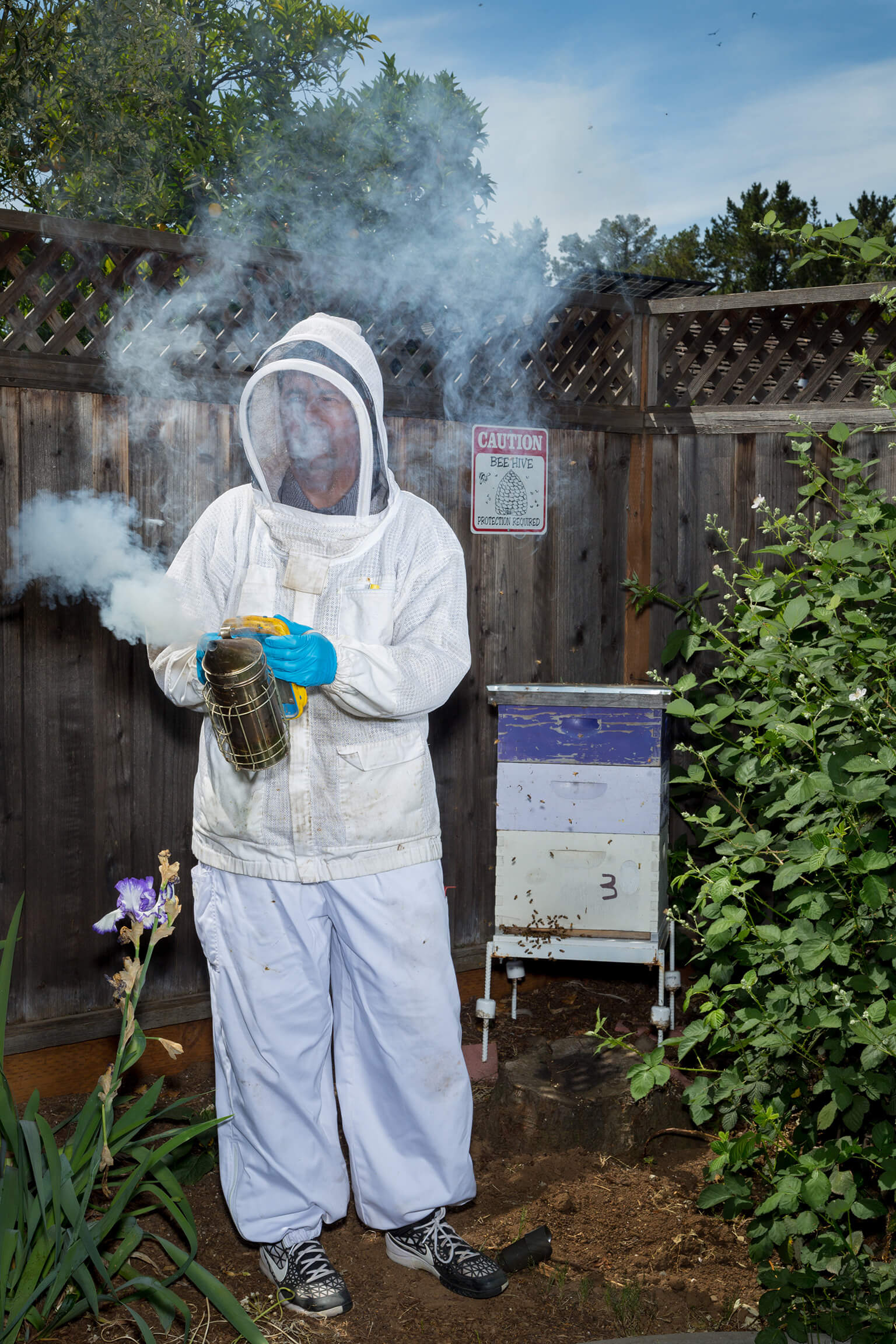
Since Quinlan doesn’t harvest the honey until Draeger’s lets him know that their inventory is low, the honey is a fresh as possible. Though the jury is still out on whether eating local honey can help with seasonal allergies, Mama Q’s is raw and unfiltered, and processed so quickly that the pollen in the bottle could still be floating in the air and causing your sniffles.
At this point, Quinlan’s not exactly earning back his investment on the bees, but he’s more than happy to keep it strictly in the “hobby” category. He thinks that Mama Q’s Family Honey Farm might be in the black by the end of this year, which does have one benefit. “You run a hobby too many years and don’t make a profit, the IRS gets anxious.”
Tomkat Ranch
On a brisk Monday, the weekly TomKat Ranch staff meeting starts by remembering old friends. “Marigold the goat has passed on,” Wendy Millet, Ranch Director, says sweetly to the group of flannel- and fleece-clad ranch staff.
Sitting around a big, sturdy table over leftovers from a ranch event the night before, the group hands Wendy’s cell phone, patching in an out-of-town employee, one to the next, offering updates on the particular element of the ranch they represent and specialize in. “The grass is longer than this time last year,” offers a member of the ranch’s Land and Livestock team.
The vibe is casual, comfortable, helpful, healthy and earnest. It truly does feel like a family and one can feel the motivation of a common goal.
You may have heard the names Tom Steyer and Kathryn “Kat” Taylor. Steyer founded the hedge fund Farallon Capital in 1986 before he left in 2012 to focus on environmental and political improvements to the world as he sees it. He is also the founder of NextGen Climate, an environmental nonprofit and political fundraiser. Taylor is the CEO of Beneficial State Bank, a community bank based in Oakland, with the mission to improve social justice and economic well-being while being economically sustainable. The difference between this power couple and others in their echelon? They are undeniably normal and modest. Taylor, tattooed and unfussy, admits that she stands out at “society” events, though she deliberately attends few of them. And for Steyer’s part, he has been known to say that it’s one of the most basic truths that a person can only ever wear one pair of pants and one shirt at a time, and only ever eat three meals in a day. They met on the track at Stanford and went camping for their honeymoon.
What you may not have heard of is TomKat Ranch, the couple’s 1,800-acre ranch in Pescadero, a few miles inland off Highway 1. When a friend of Taylor’s told her about the ranch property in 2002, technology and finance bigwigs were buying up pieces of property in the area left and right to make a profit. If Taylor didn’t buy it, it would likely have become a development with far less noble goals. Team TomKat took action.
The Ranch is meant to be a living testing ground for sustainable ranching. The very committed team looks to nature to inform every part of their landscape management—from the way they raise the beef they sell through LeftCoast GrassFed, to the strategies they have in place to regenerate natural resources; to their true mission to inspire other people to join the cause. Wendy Millet explains that their land management is no longer about creating an environment that is sustainable (which has become a bit of an environmental buzzword with muddled meaning), it’s about making it regenerative. When the ranch was purchased, the soil, water and biodiversity were degraded from past management practices. “We didn’t want to sustain that degraded condition,” she says. “We wanted to restore and regenerate—thus our search and pursuit of regenerative practices.”
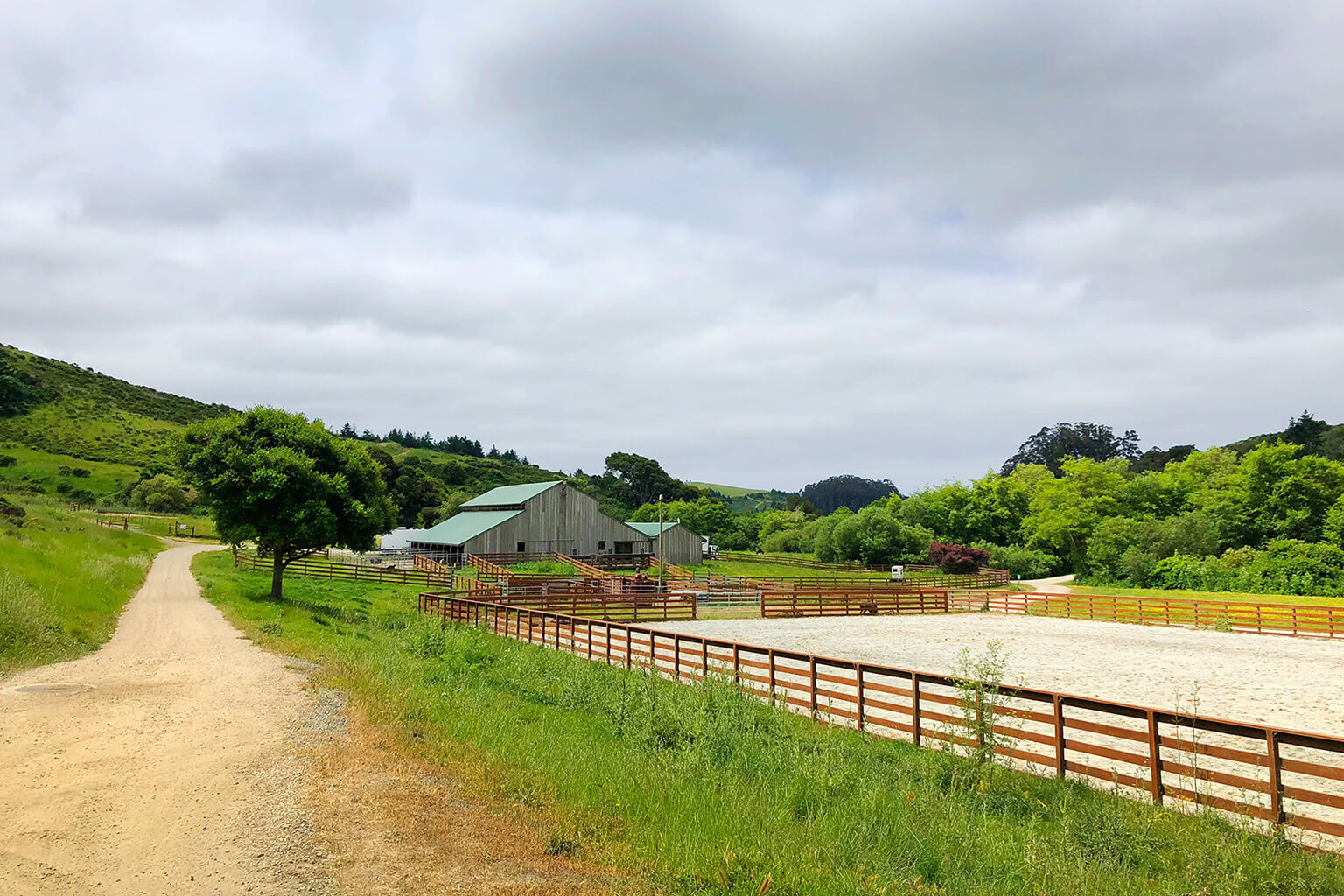
“We are all connected,” Millet goes on. “You can restore soil by moving grazing animals on the land—mimicking the way nature has always had grazing animals on the planet. You can look at the microbiology within a cow’s stomach and it can inform how you manage the entire ecosystem.” Millet goes on to explain how the plant material that cows eat is full of cellulose, which is hard to digest, so they rely on bacteria and other organisms in their stomachs to help that digestion process. Without cellulose-digesting bacteria, cows wouldn’t be able to digest plant material all and neither would we. There are so many things to consider in the complex world of nature. One teaspoon of healthy soil has over a billion organisms. These environmental professionals are trying to acknowledge every one of them.
TomKat Ranch is certainly not just another “green” endeavor by people who have the resources to experiment on a large scale; the ranch is using highly detailed, substantive—and at times, complex—science to back up their findings. Along with Point Blue Conservation Science, TomKat runs experiments and monitoring programs to carefully plan out regenerative ranching practices. They experiment with and create all kinds of tools that help land managers to do this more easily.
Something so fascinating about the good work TomKat Ranch is doing is the way it is an extension of the business mentality of nearby Silicon Valley. People come from all over the world to this area and are willing to spend enormous amounts of money on start-up ideas. When those ideas really work, they are replicated in various forms—and even modified for various industries—here and around the world. Such is the case with TomKat, which acts as a sort of environmental incubator…but they are taking it one step further.
Now that Steyer, Taylor, Millet and the rest of the team have found strategies in land management that really work, they are using their resources to show other ranches how to do the same. There is no proprietary technology; they have found programs and tools that have proven effectiveness on their property and because their priority is the earth and not a for-profit, they share their findings regularly through workshops, classes, publications and social media. “I’d like to see regularly that prospective regenerative ranching land managers and lands have the discipline of a healthy, fully functioning supply chain,” says Taylor. “We have the audacious goal of migrating 1 million acres of grassland in California toward regenerative ranching. We learn so much from others doing this work around the world and are eager to share the many benefits.”
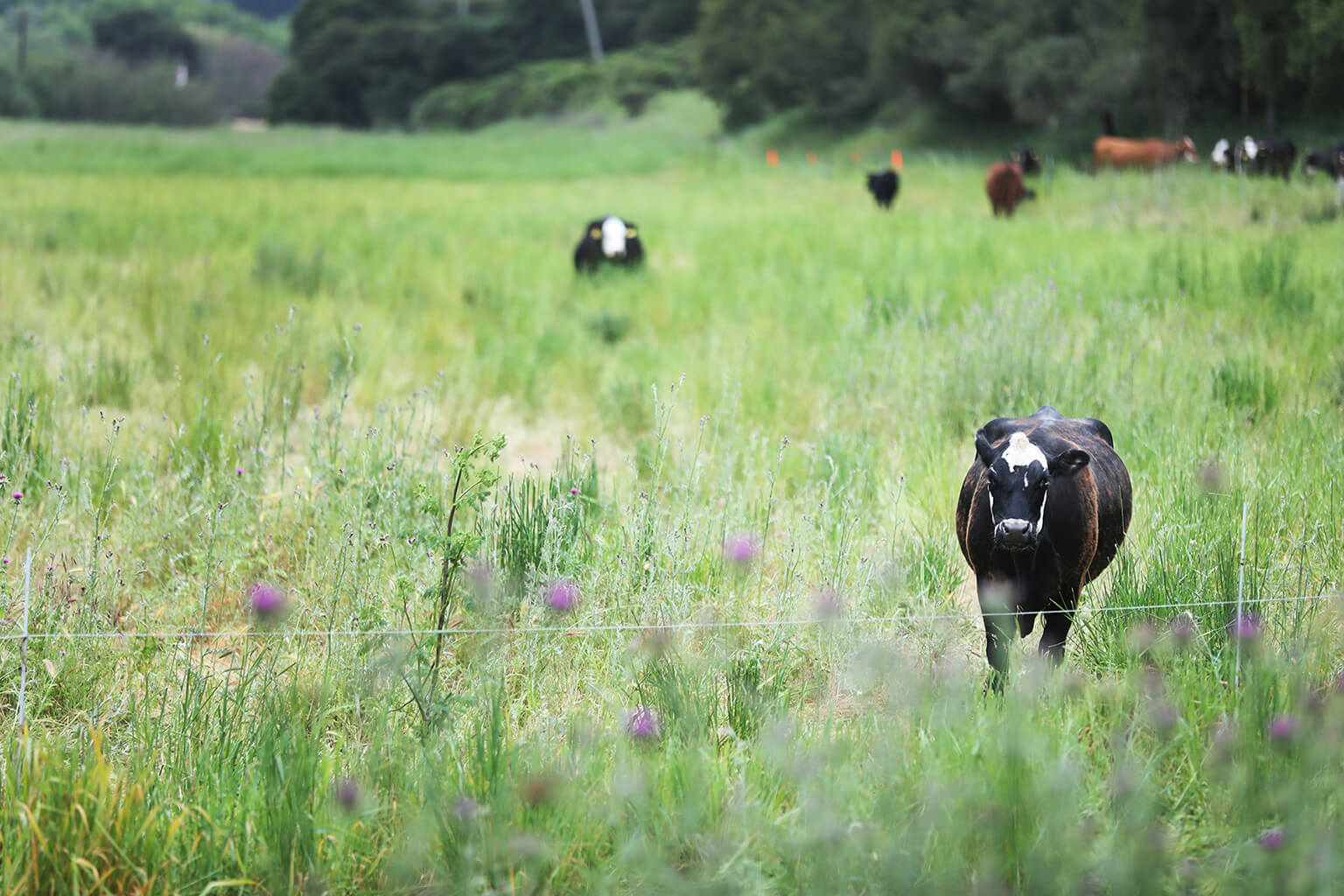
They want to contribute to the awareness that large, migrating herds, like the cows they are raising, aren’t bad for the conservation movement, but can actually help; ranches can be working landscapes if people understand how animals and land work together. TomKat ranch wants to demonstrate to other ranches and farms—and people—a way of farming, agriculture and food growth that doesn’t damage the environment and moreover, to incite them to follow suit.
Getaway to The Pinnacles
If visiting a National Park is on your summer bucket list, we’ve got great news: there’s no need to make the long trek to somewhere like Yosemite when the Peninsula’s own Pinnacles National Park is less than two hours south! Pinnacles features incredible hiking, stunning views and natural beauty that you just can’t find anywhere else.
Originally a National Monument established in 1908 by Teddy Roosevelt, the unusual area was brought to Roosevelt’s attention by faculty at Stanford and other Peninsula residents including David Starr Jordan, the university’s first president. Many of the man-made structures you can see at the park were constructed by the Civilian Construction Corps (CCC), who were active at the site in the 1930s and early 1940s. The CCC’s work, including the steps carved into the cliffside on the park’s famous “Steep and Narrow” hiking path, are a reminder of the Pinnacles’ intriguing history. And the Pinnacles only became an official part of the National Parks since a piece of legislation cementing its new status was signed by President Obama in 2013, so it also qualifies as one of the country’s newest federally-protected lands.
The park’s unique look is due to its location on the San Andreas Fault. Geologists think that the area was once a prehistoric volcano located near Bakersfield. The section of the volcano that is now the Pinnacles was located on the Pacific Plate, which has shifted northward by hundreds of miles in the past 20 million years, taking the park with it. And since volcanic rock is (relatively) soft, the elements have carved the exposed part of the park into eye-catching shapes.
Despite its lofty name, the best part of the Pinnacles might be what’s located beneath the ground. Another gift from the San Andreas are the park’s talus caves, created when large boulders fell into canyons due to the earthquakes that still occur along the fault. The spaces between the rocks and the canyon floors are now the perfect home for some of the Pinnacles’ unique and endangered species, like big-eared bats and red-legged frogs.
There are over 30 miles of hiking trails winding throughout the park, ranging in terrain from peaks with amazing views to gentle riverbed walks. Serious rock climbers will want to head to the Bear Gulch Day Use Area, where they can access some of the notoriously tricky routes.
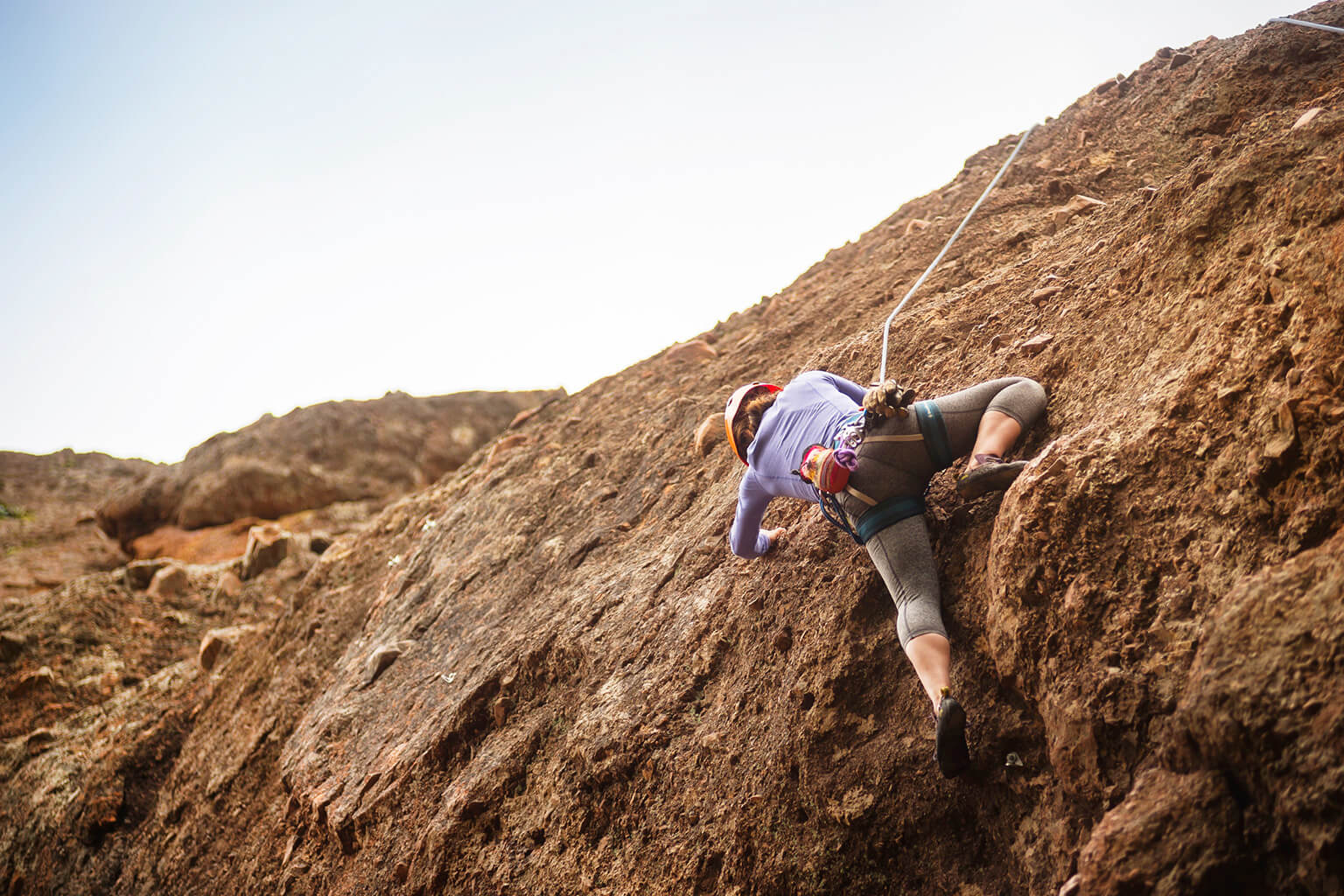
Pinnacles National Park is also one of the few places in the world where you can see the highly endangered California condor in the wild, catching thermals high above the canyons. It’s a bird watcher’s paradise, and within the park, trying to spot condors can be a public service as well as an entertaining pastime. While the giant birds once soared all over the Golden State, they’re now endangered and every condor you see at the Pinnacles is the result of successful conservation efforts. Park staff watches over their flock with an eagle eye and always want to learn more about their habits, so feel free to mention any condor activity you manage to catch to a ranger.
This just might be the best time to plan your visit to the park. The summer’s soaring temperatures, which can sometimes pass 100°, have started to come down. Additionally, the park’s signature talus caves have also recently reopened to the public. The caves are closed for a few months each year to protect a new generation of Townsend’s big-eared bats, but the pups are now old enough to share their home with curious visitors. While arachnophobes might want to avert their eyes, fall is mating season for one of the park’s more secretive inhabitants—tarantulas. Visitors who keep their eyes to the ground could be rewarded with the unusual sight of the creatures leaving the safety of their burrows to find a mate. If spiders make you wince, you’ll be glad to know that wildflowers in the park will also be out in full force this season. Although the spring might be a more popular time to spot native flora, there are plenty of fall-blooming species—including vinegarweed, California fuschia, butterweed and Satan’s goldenbush–that dot the Pinnacles at this time of year.

